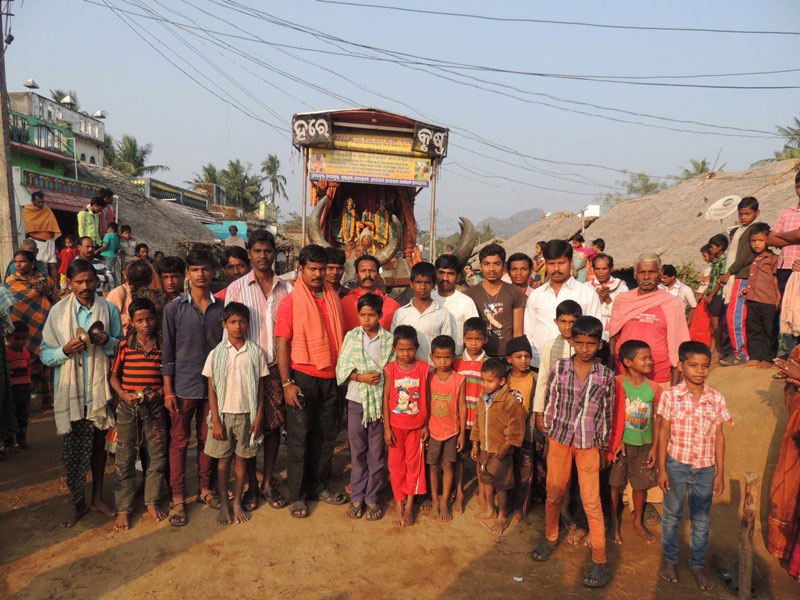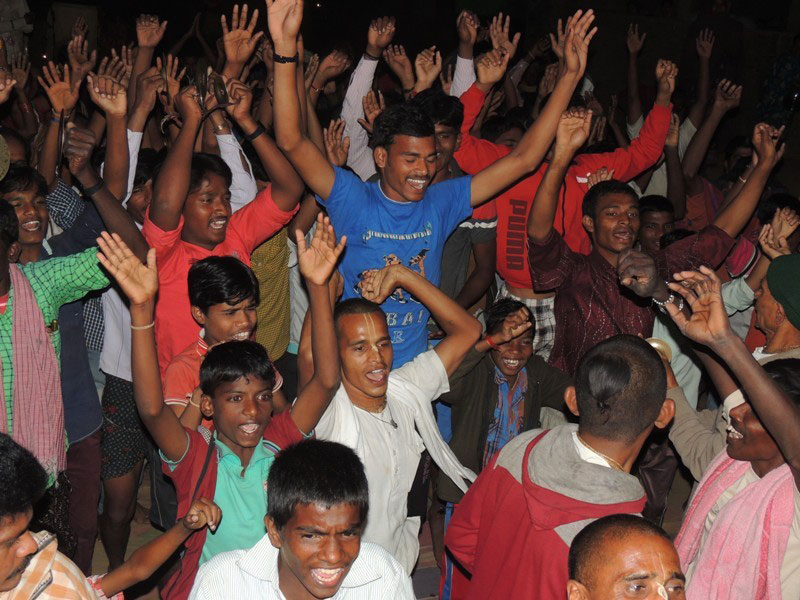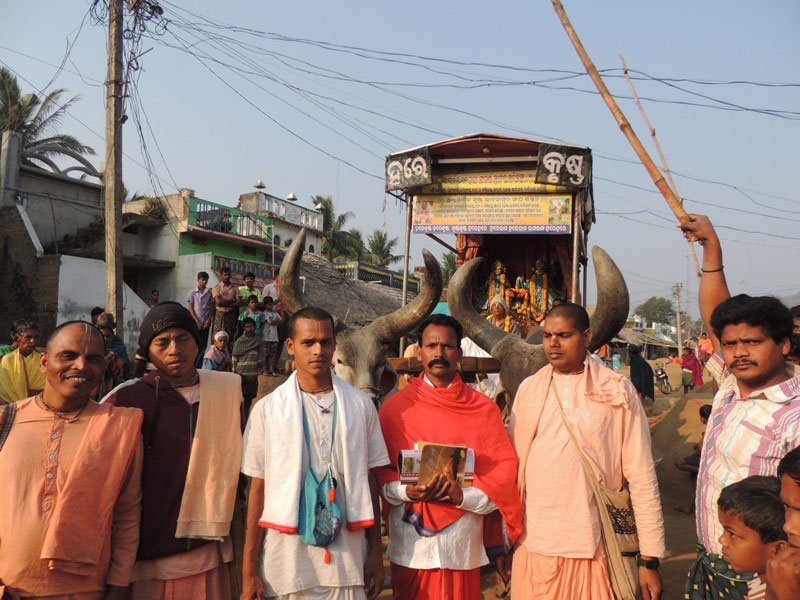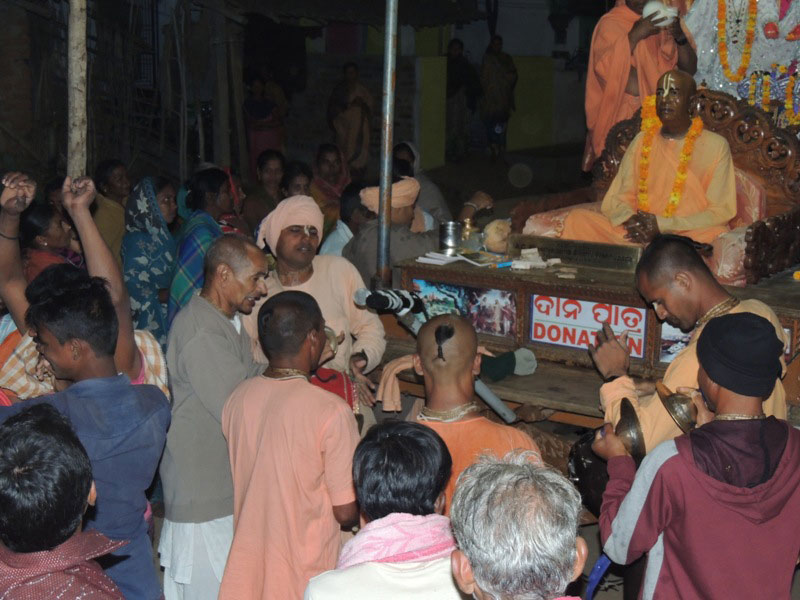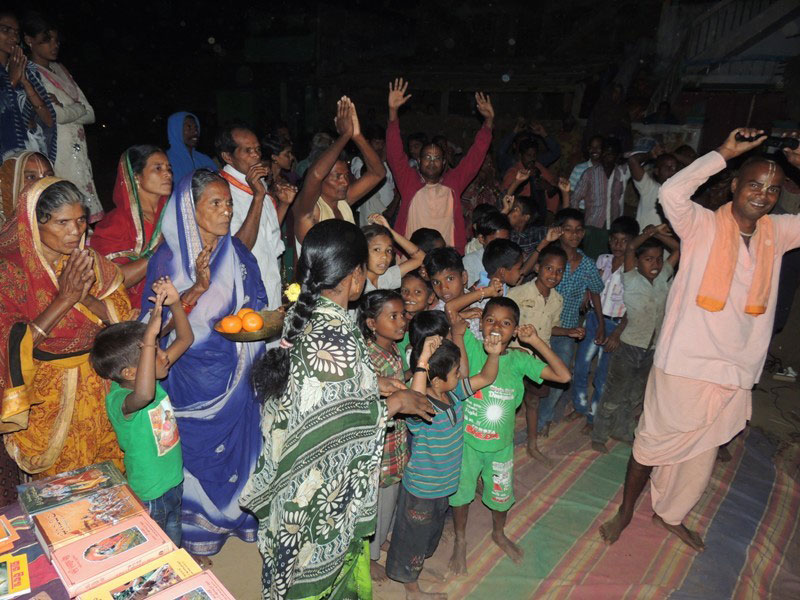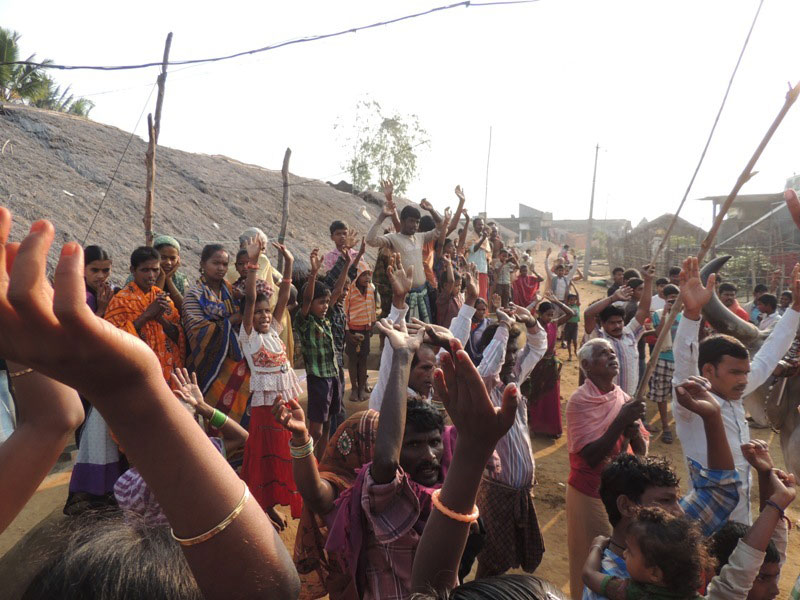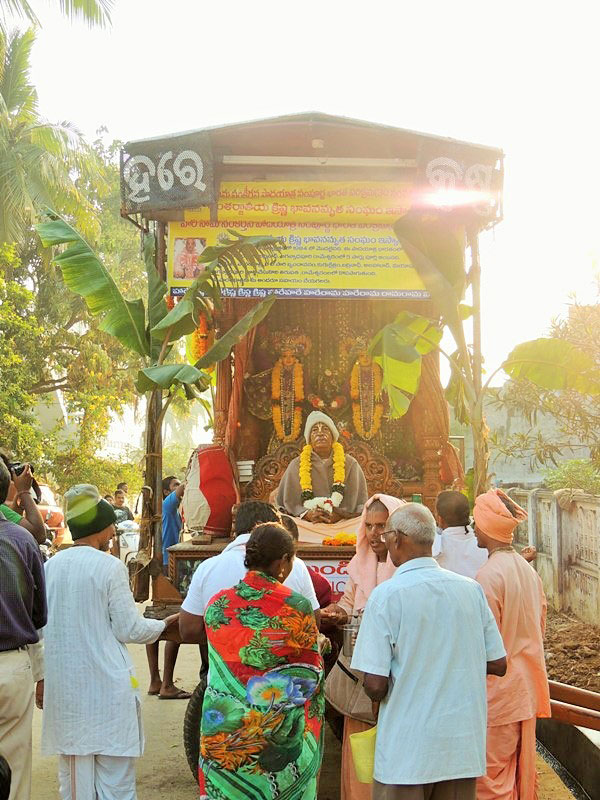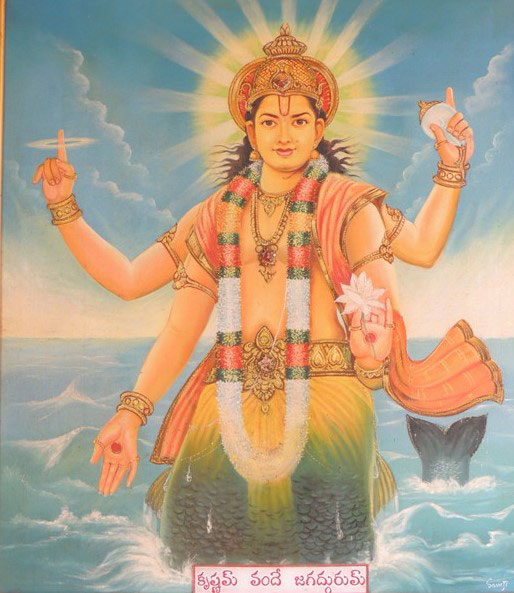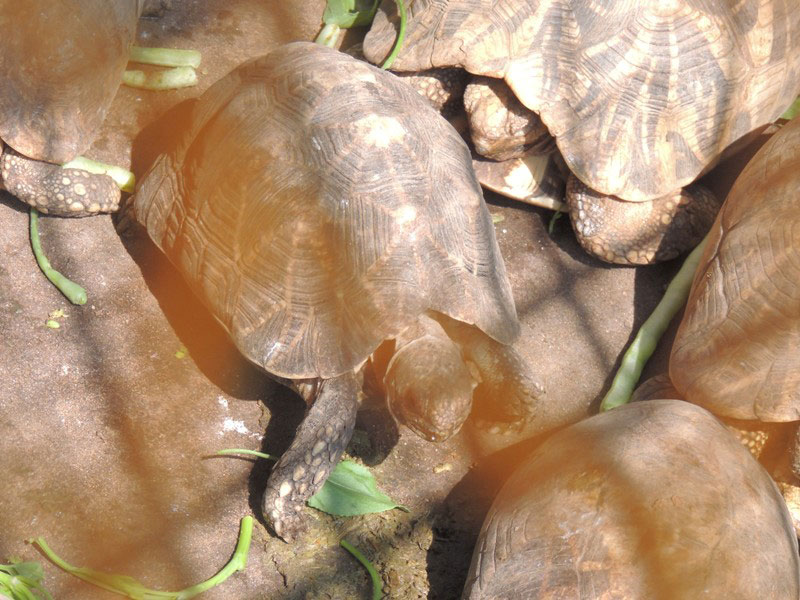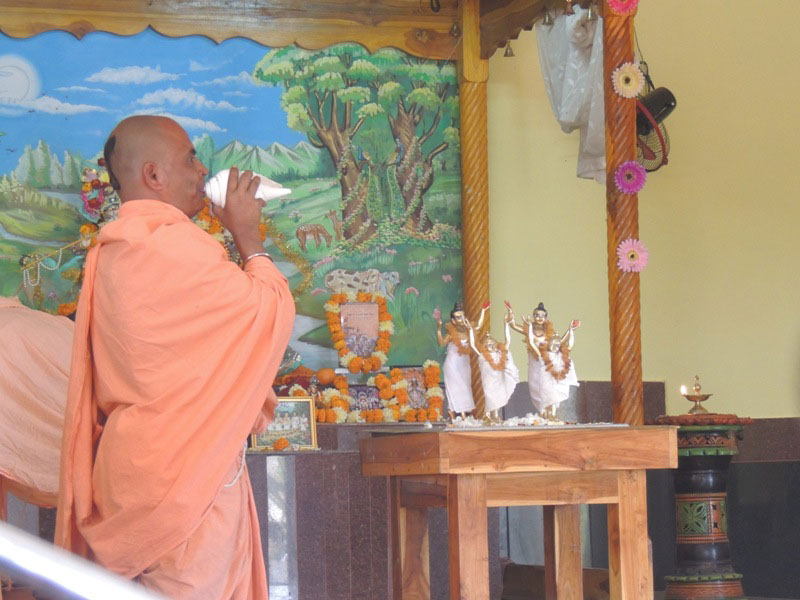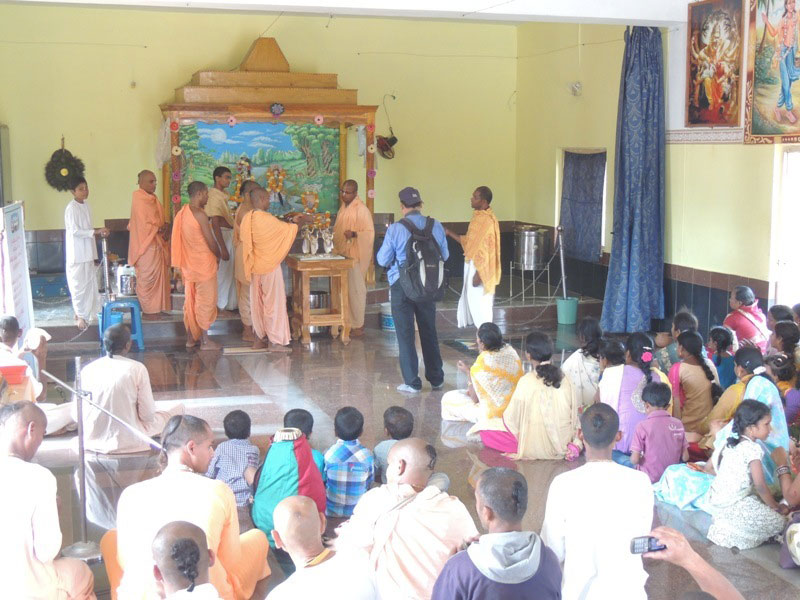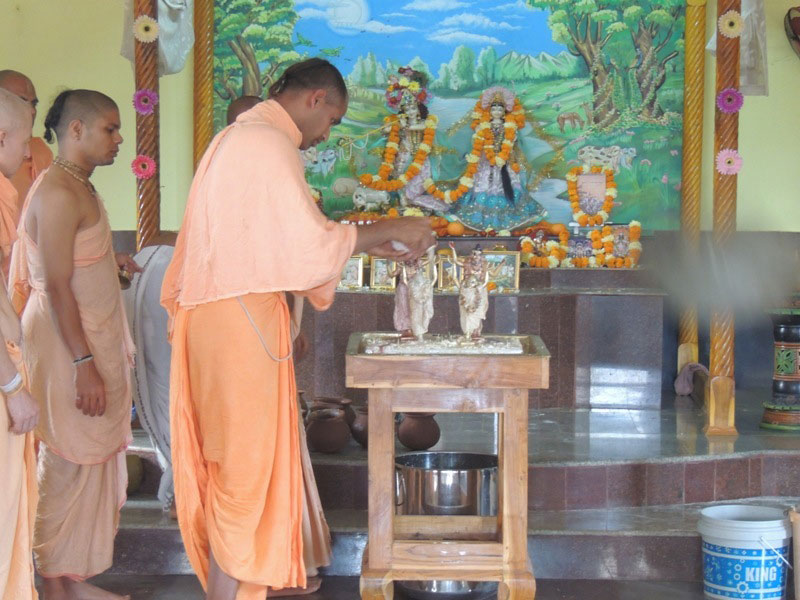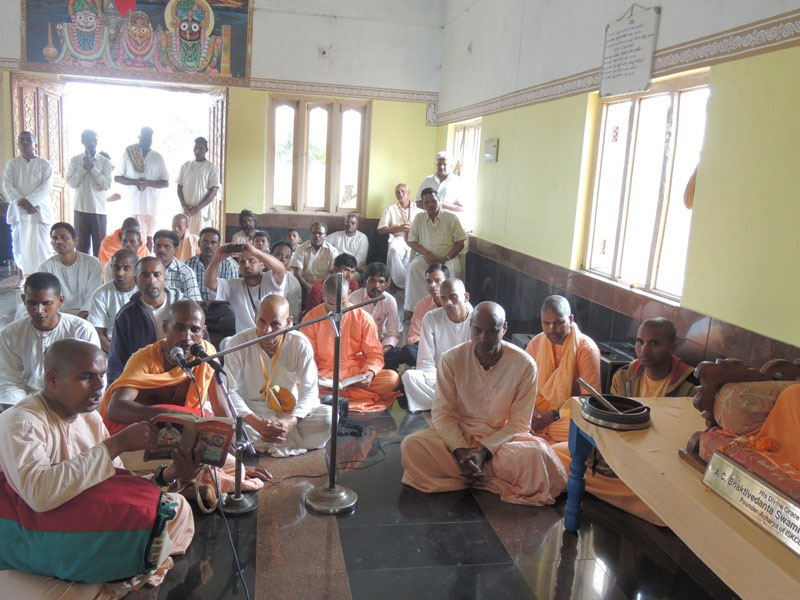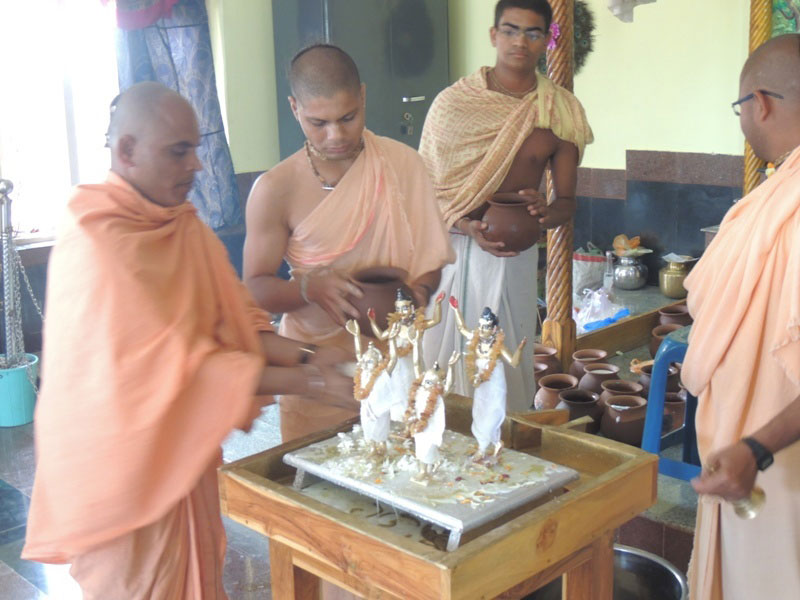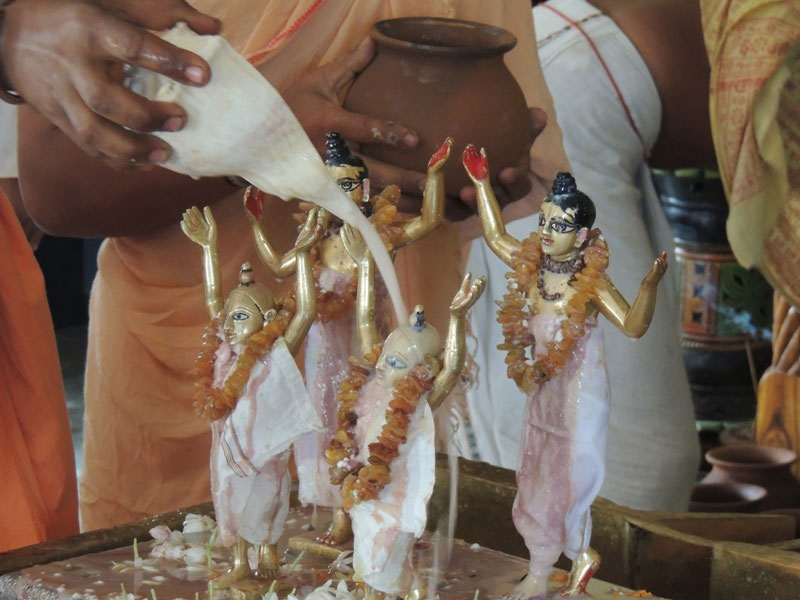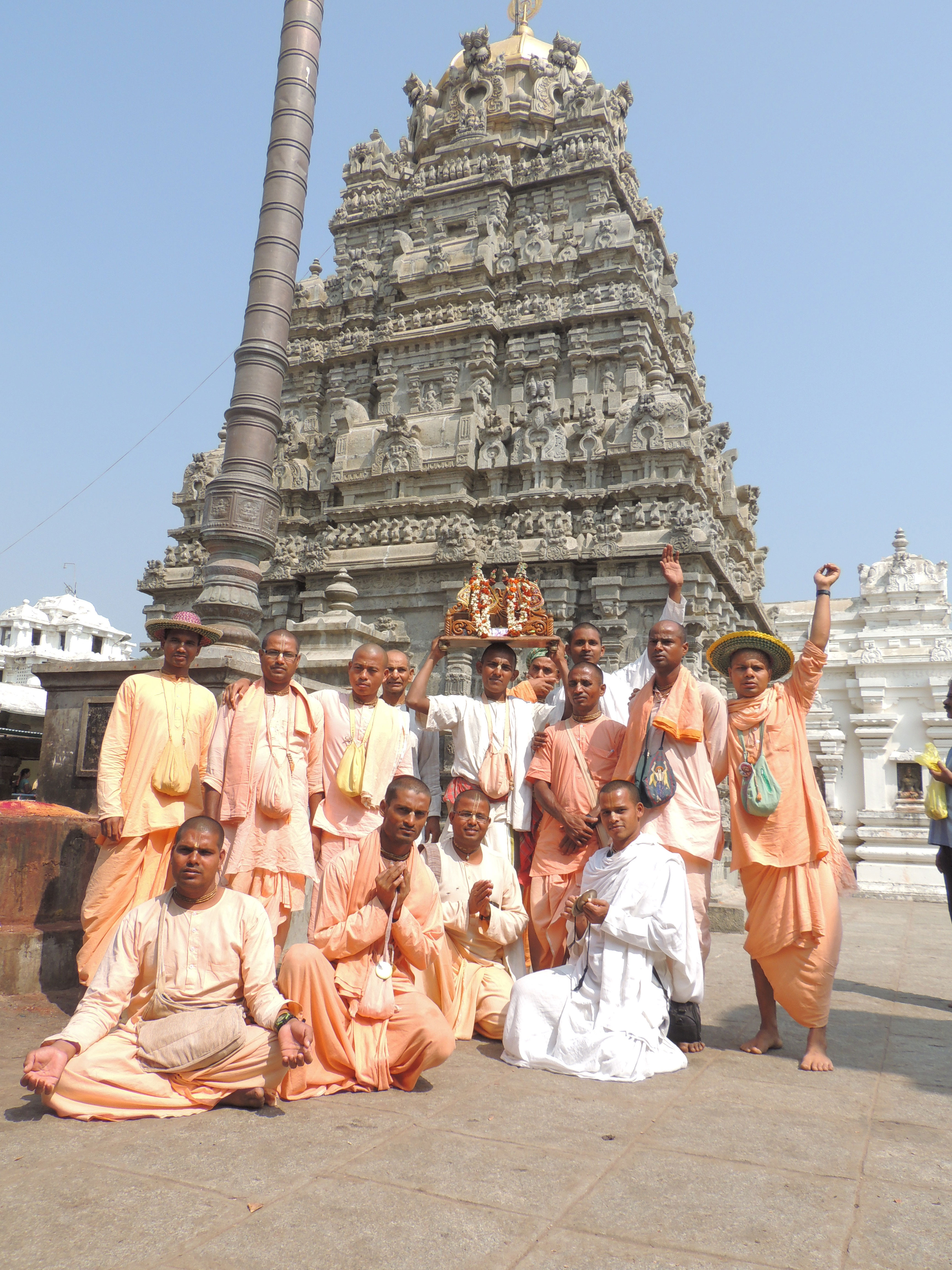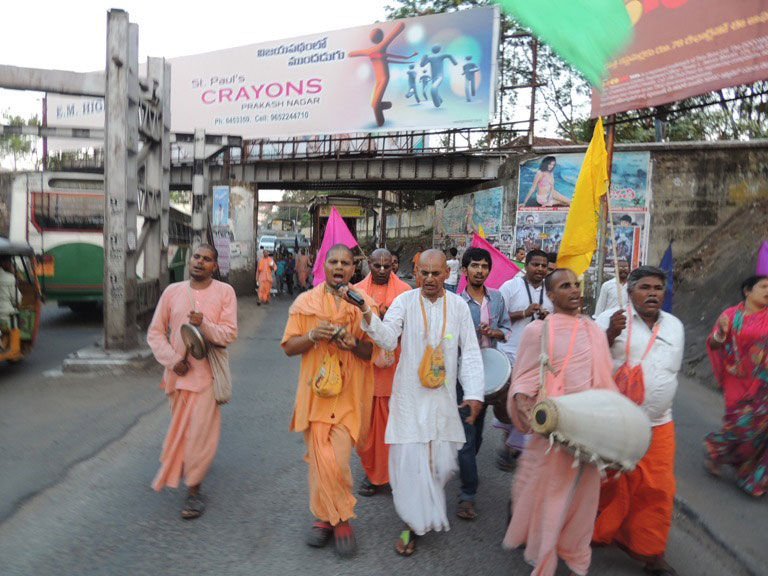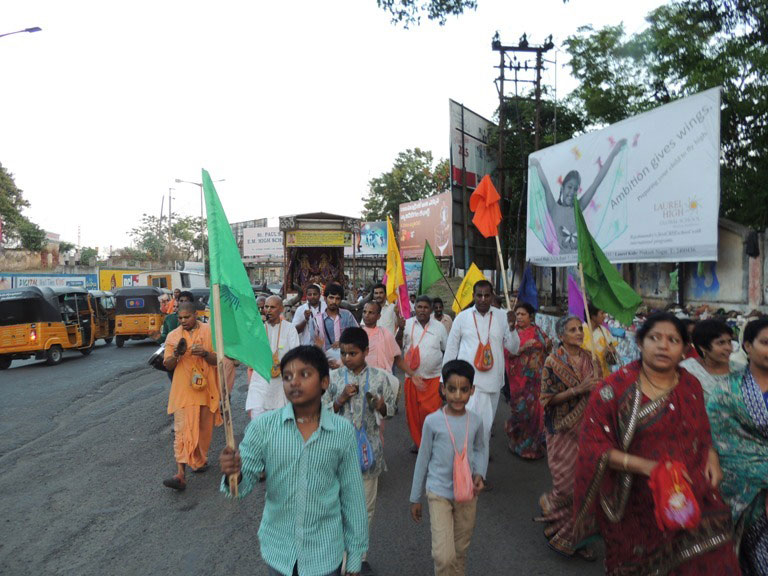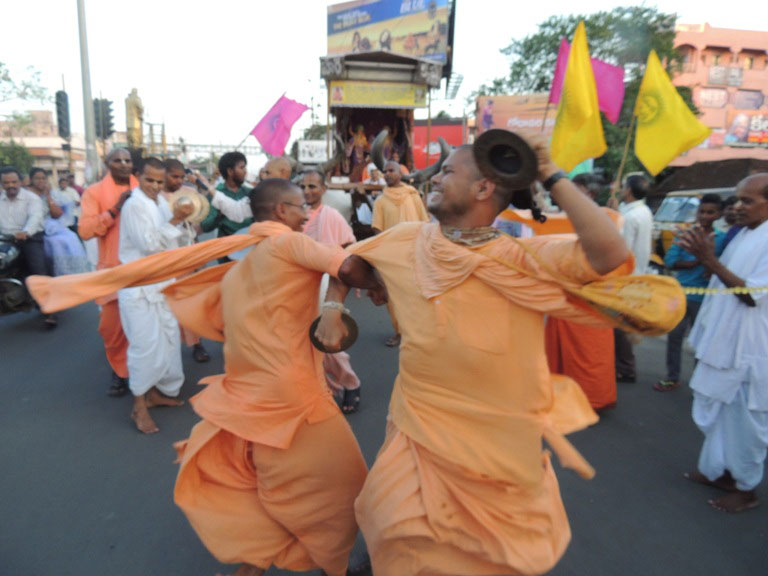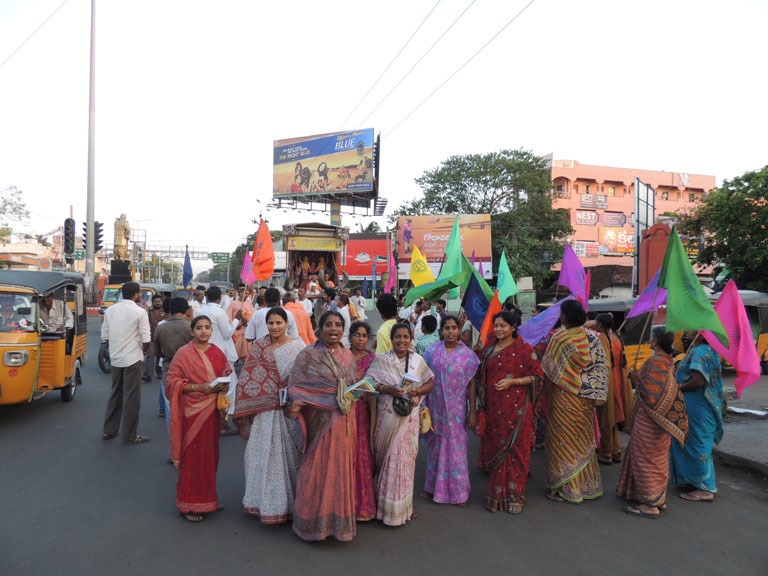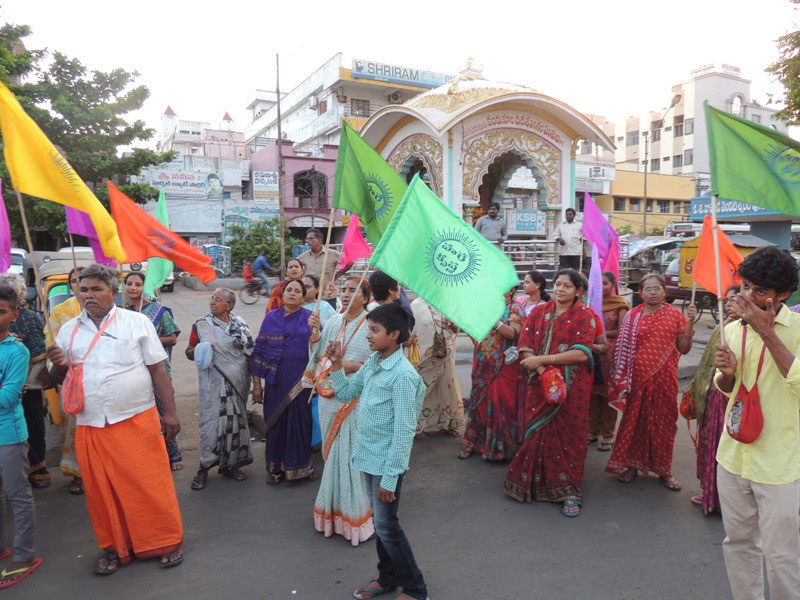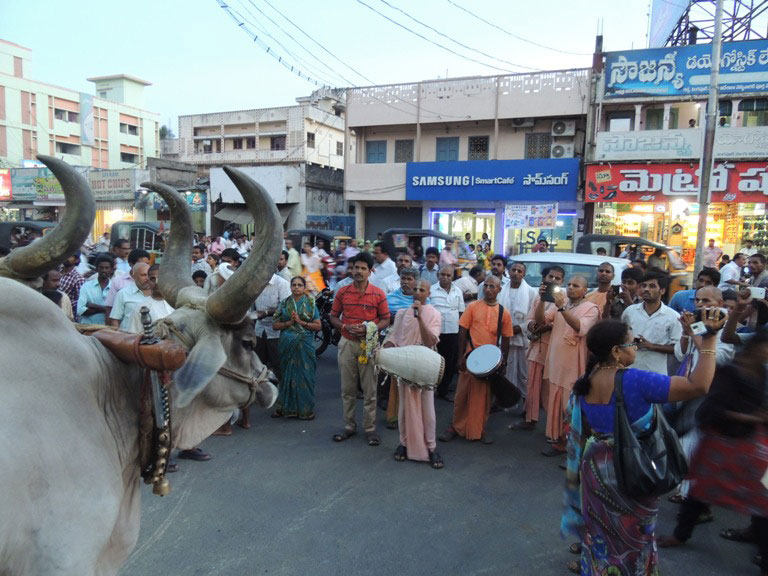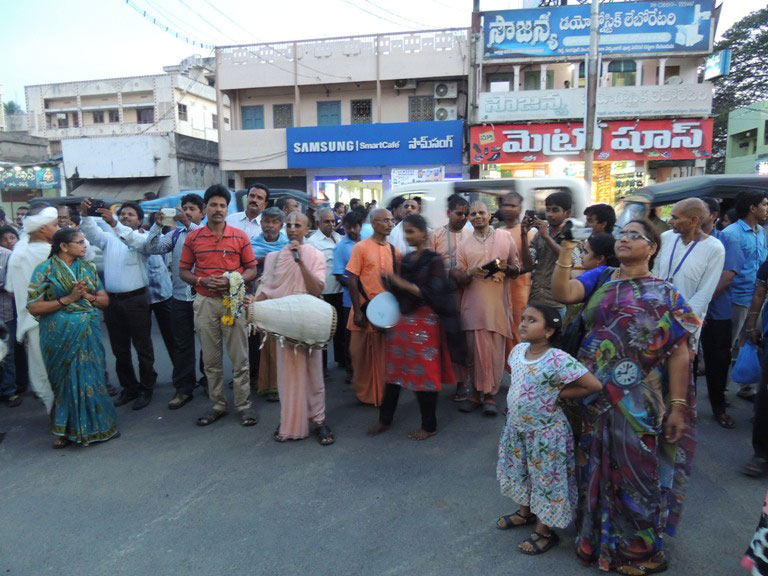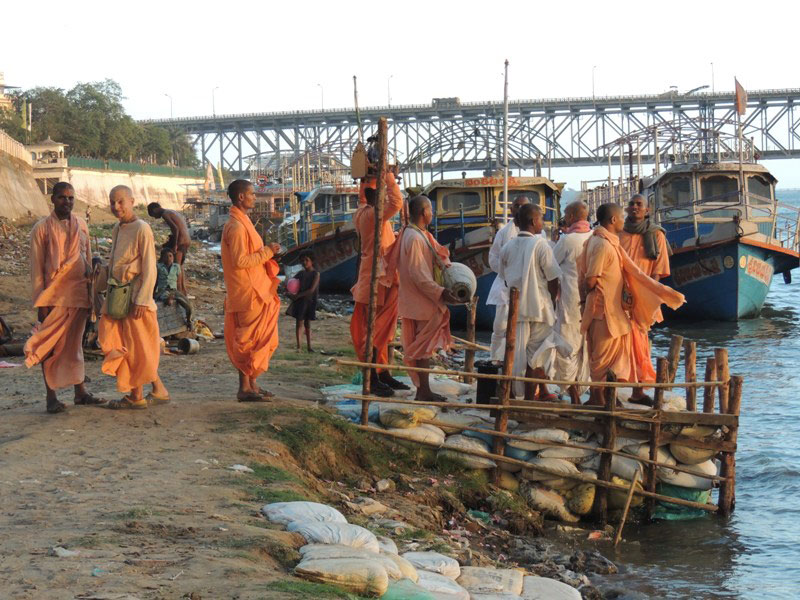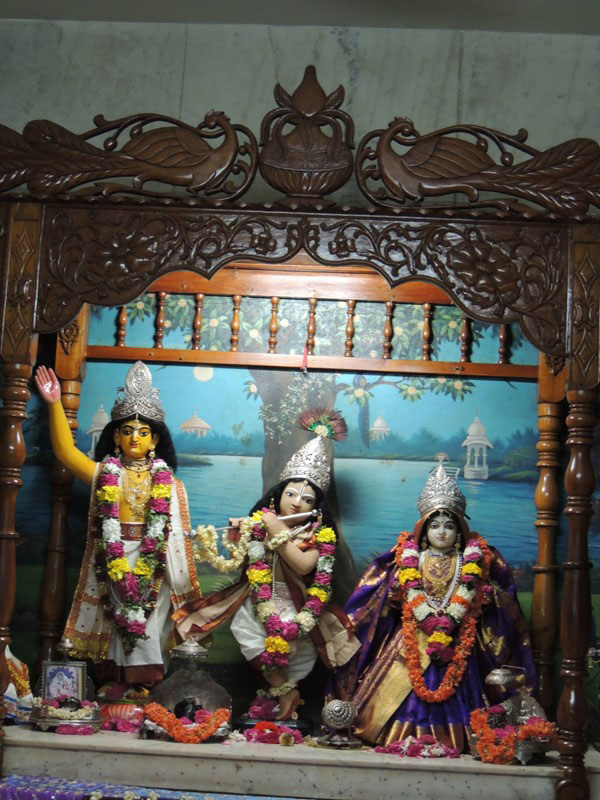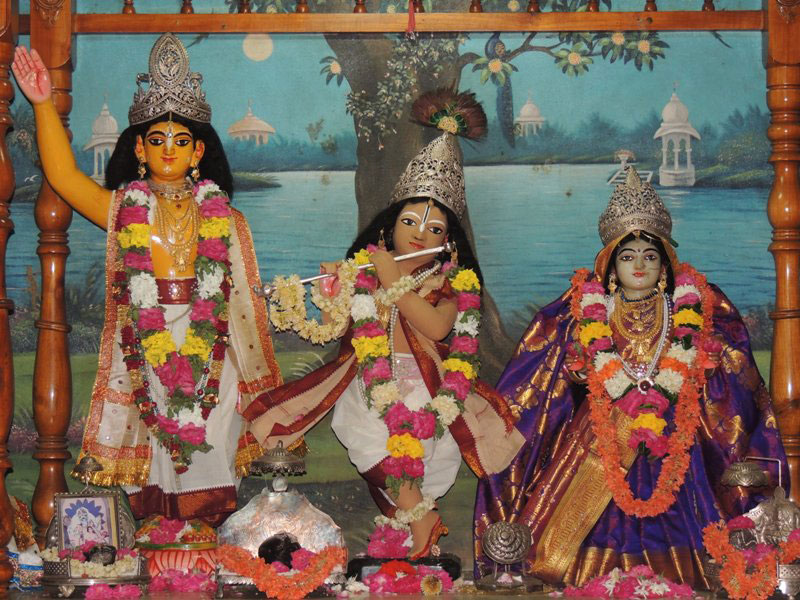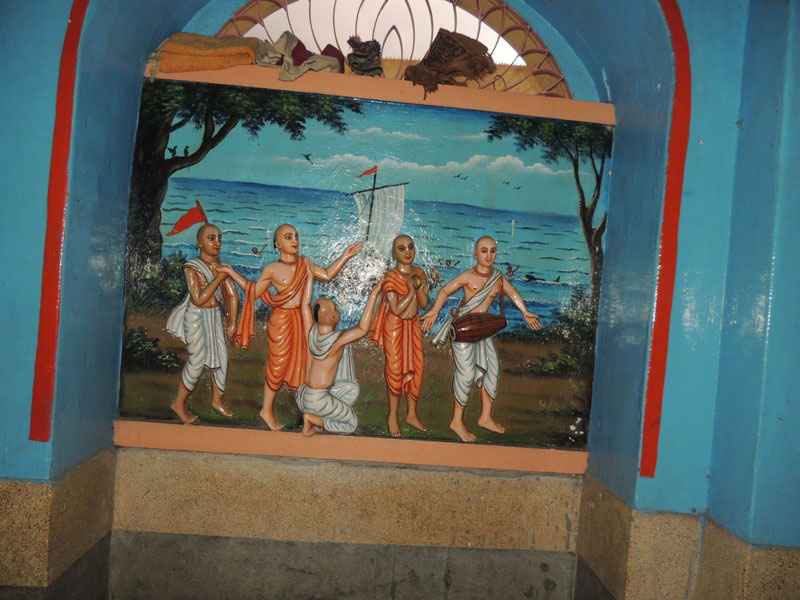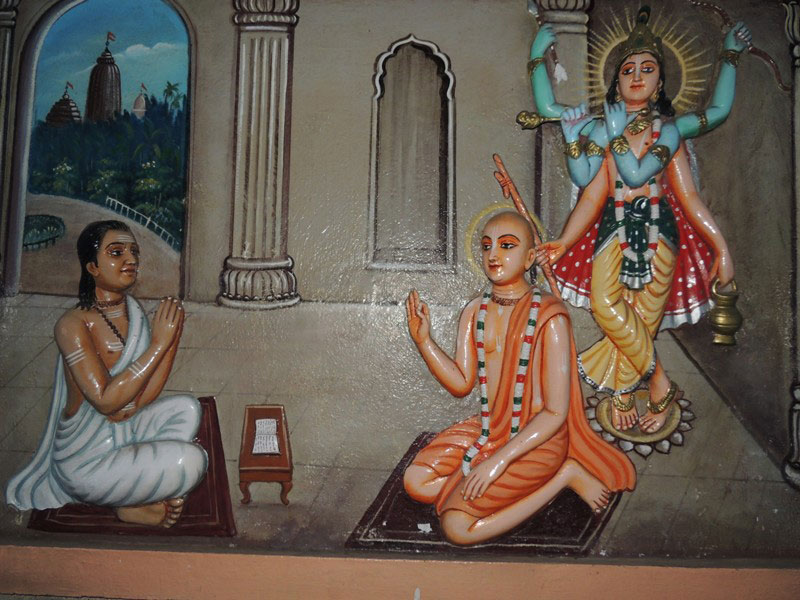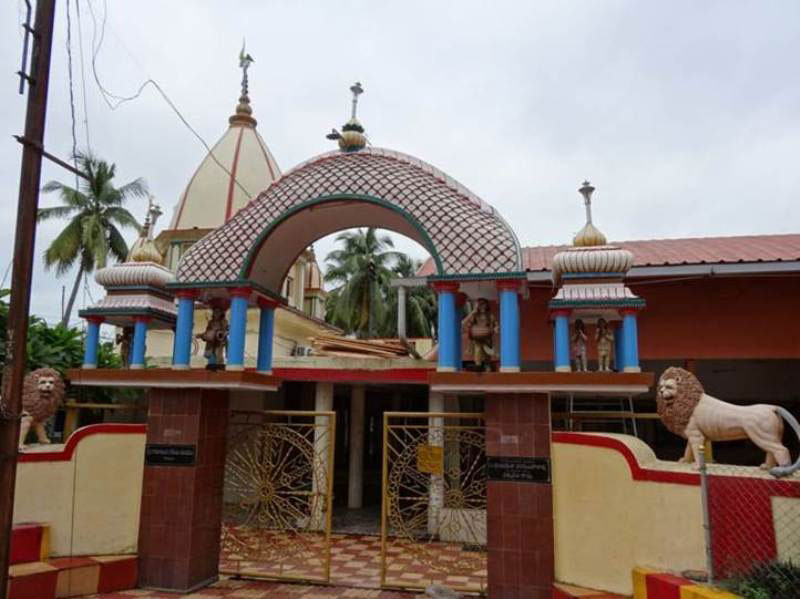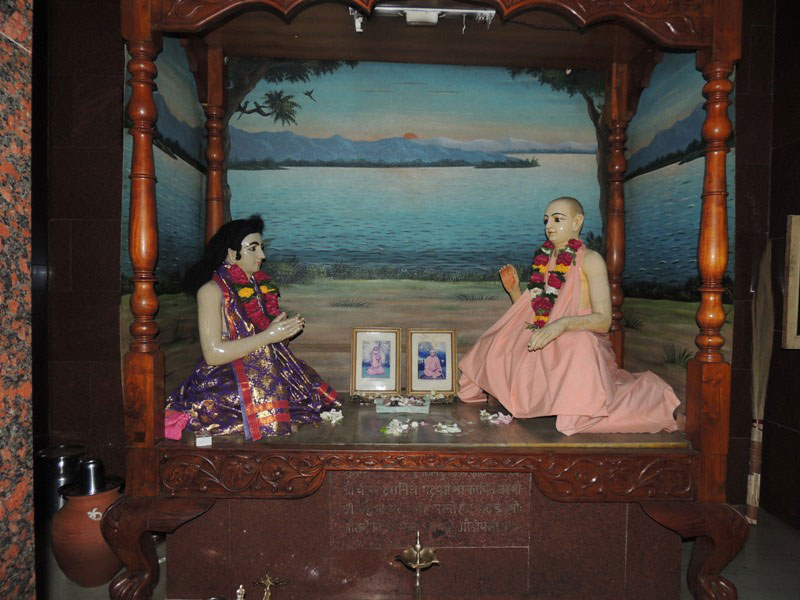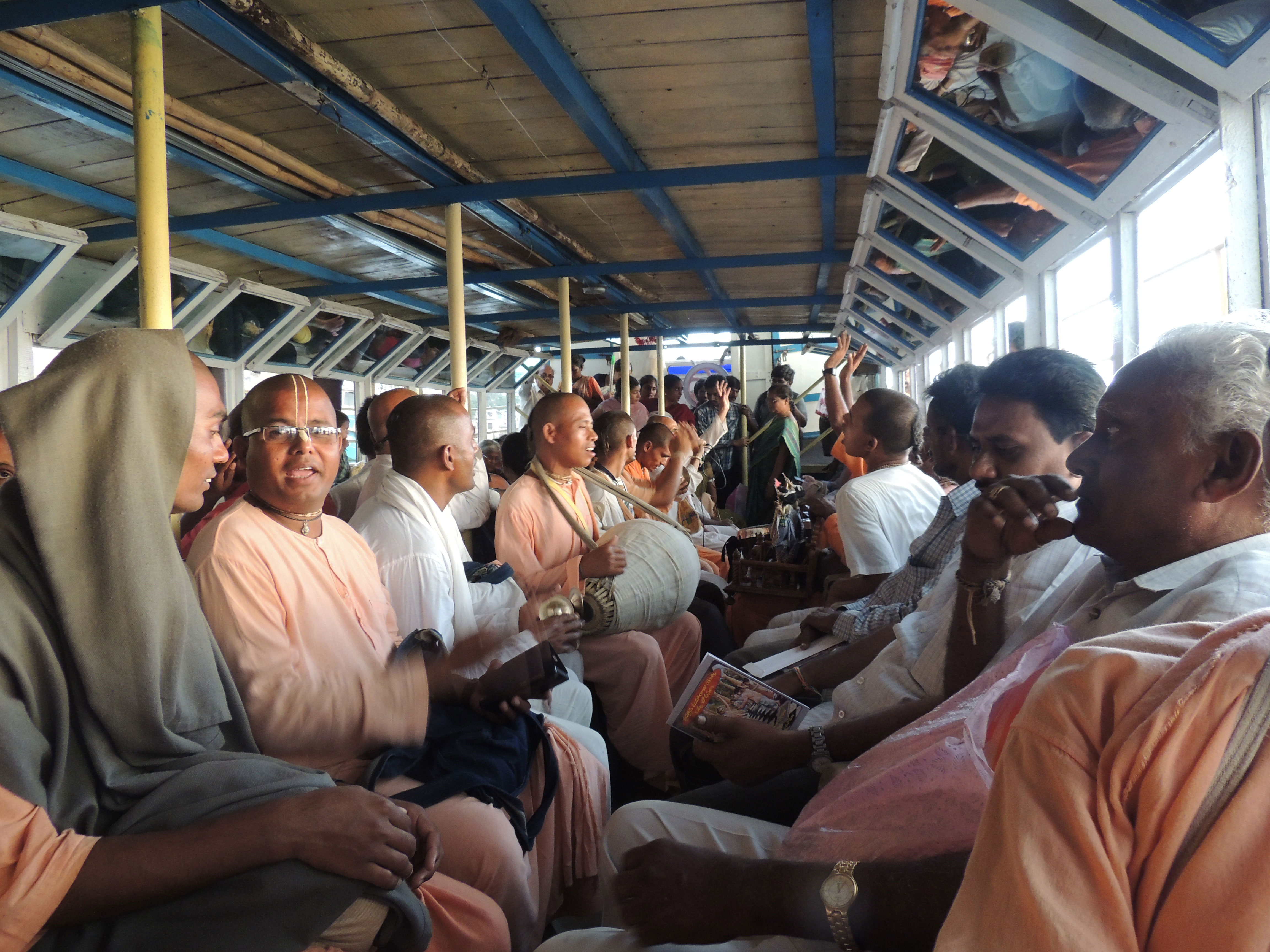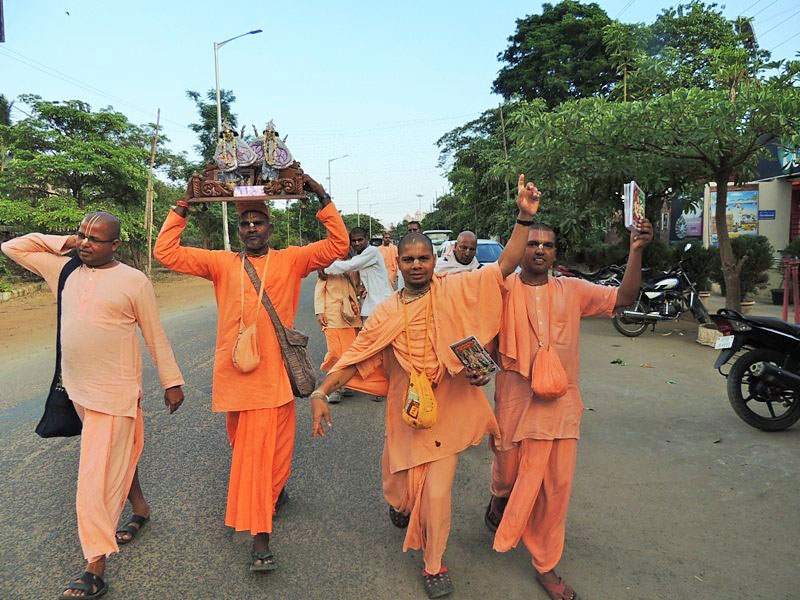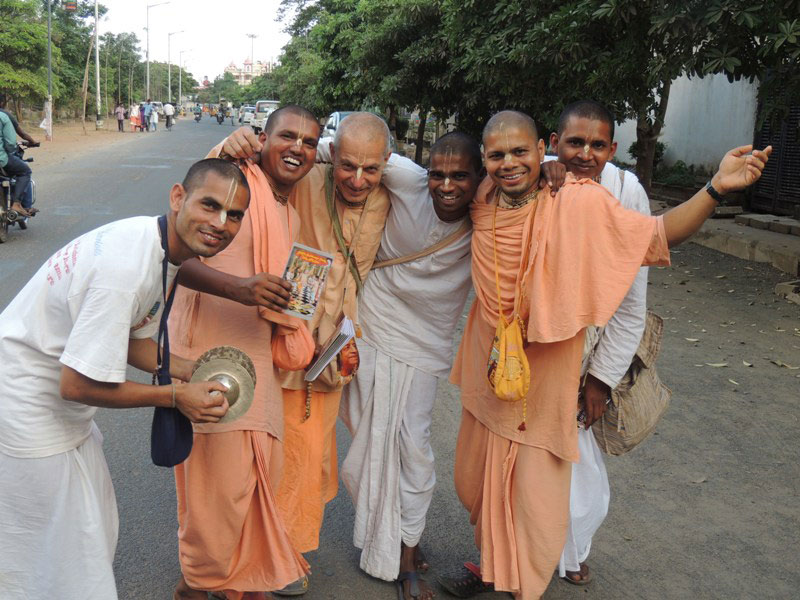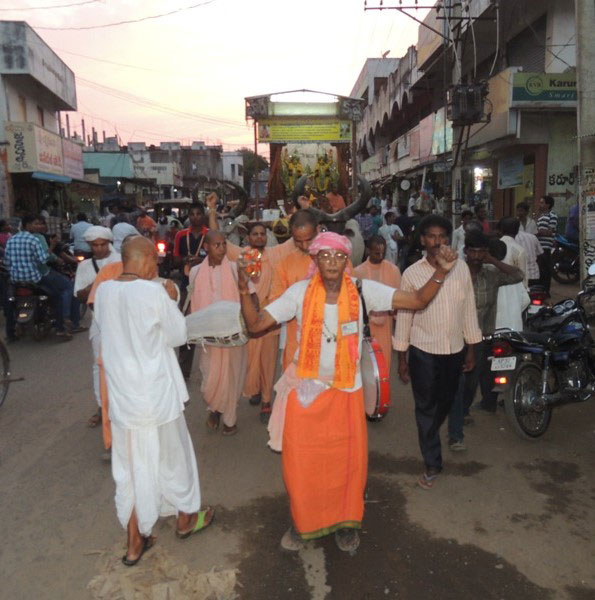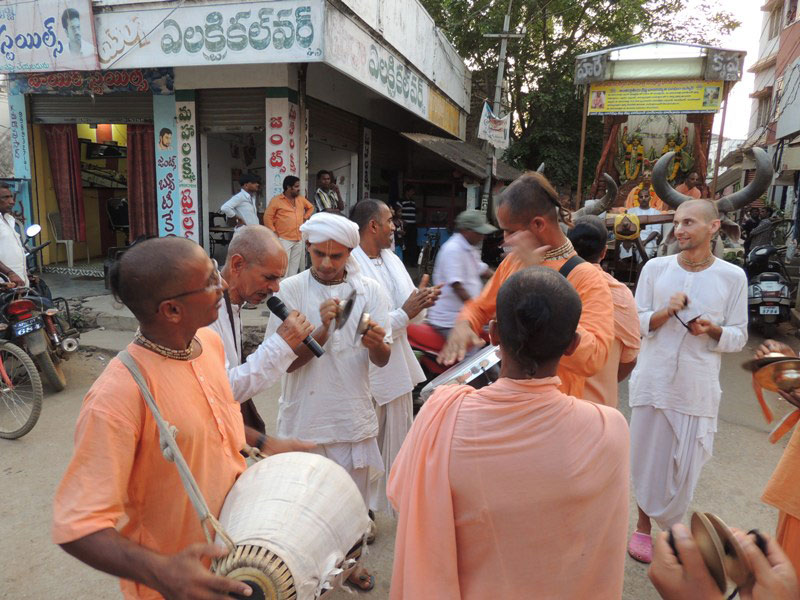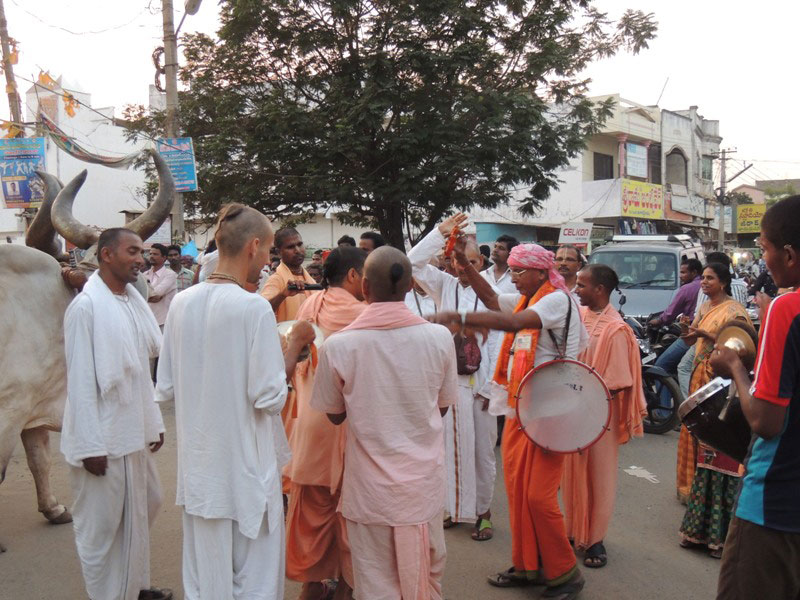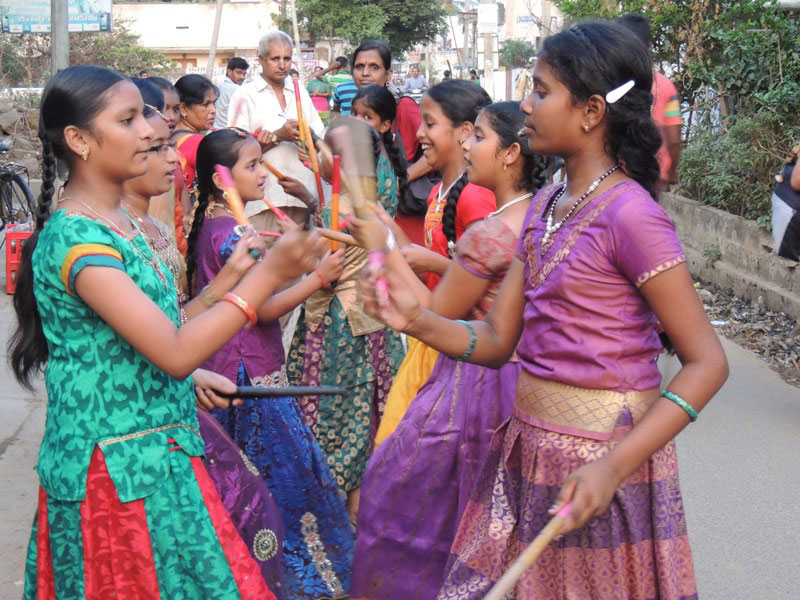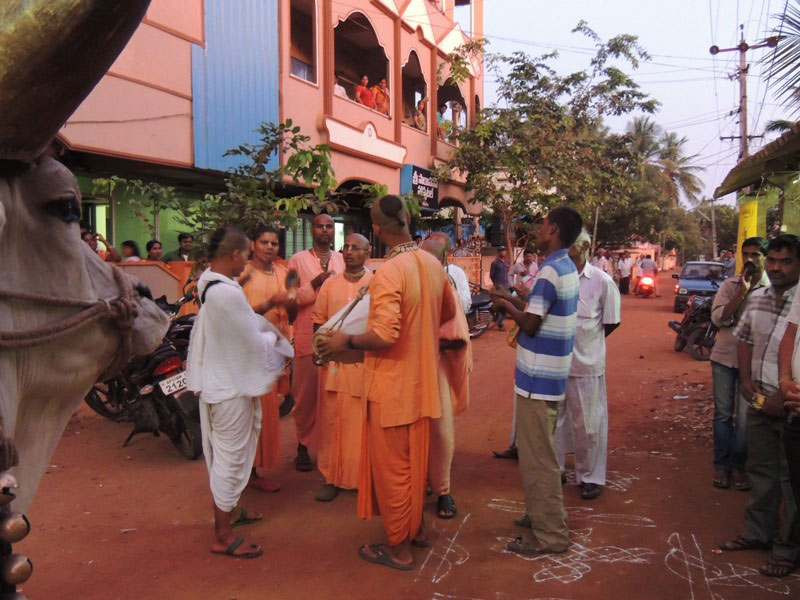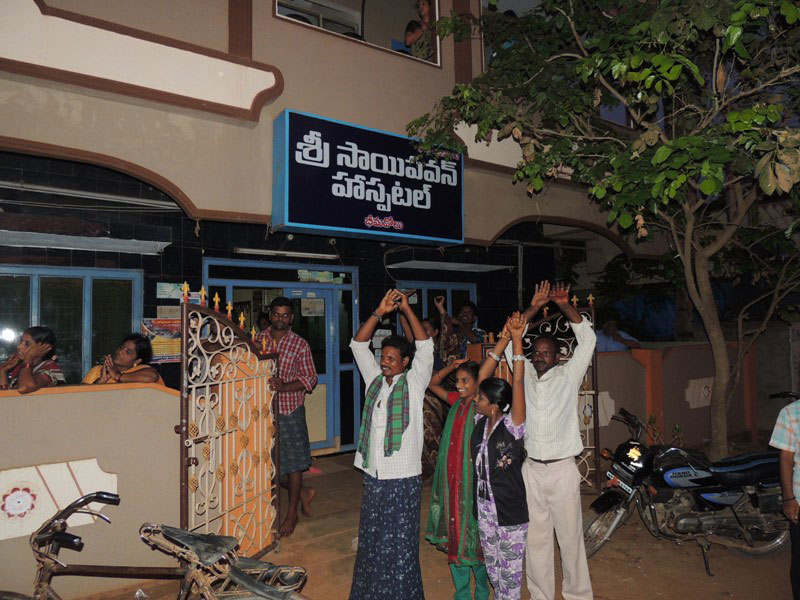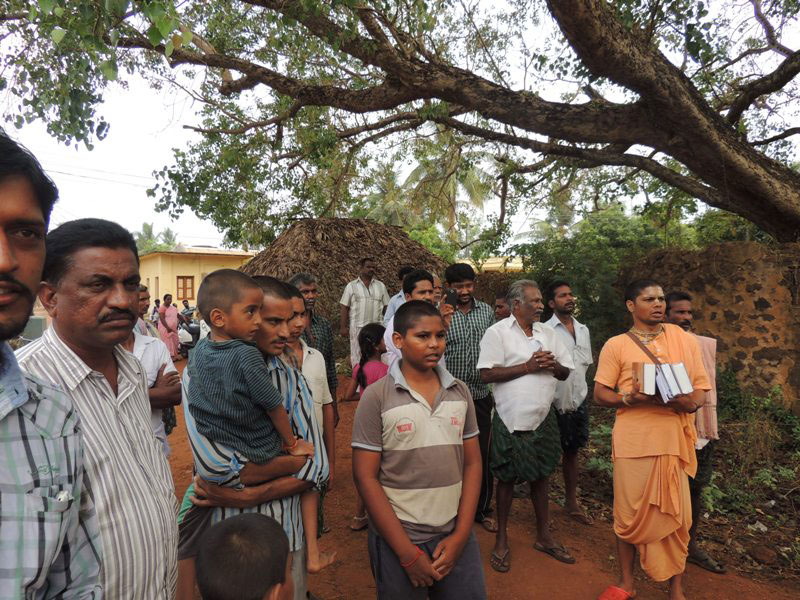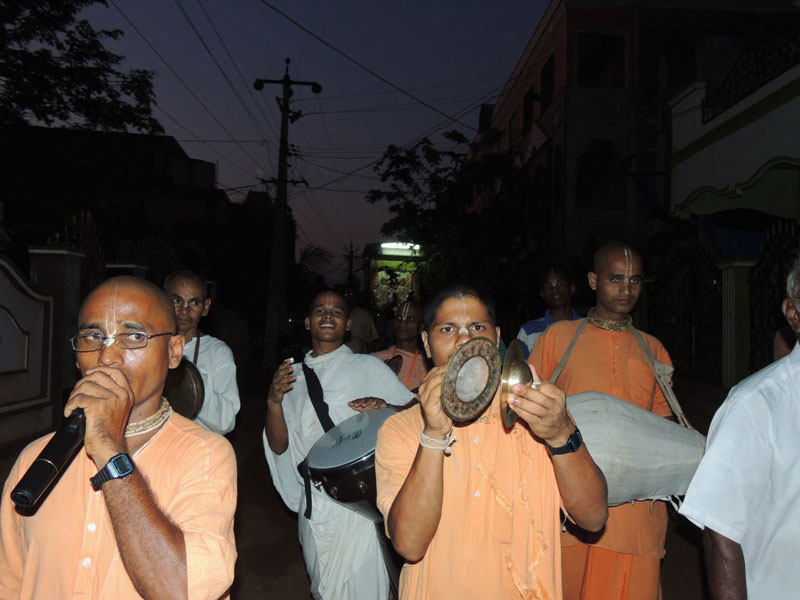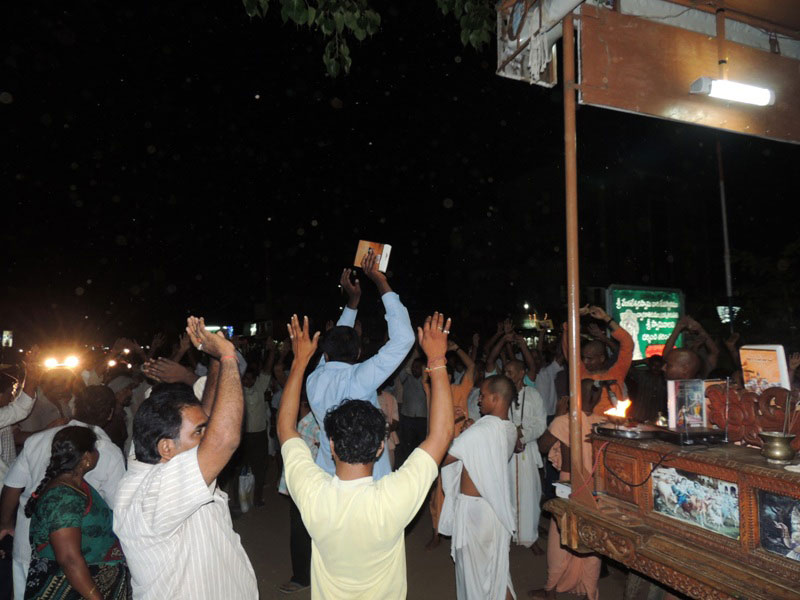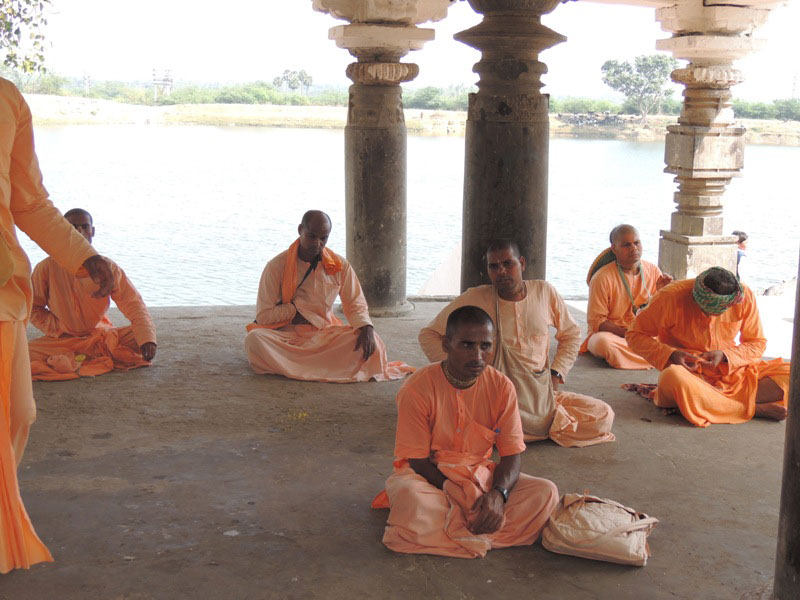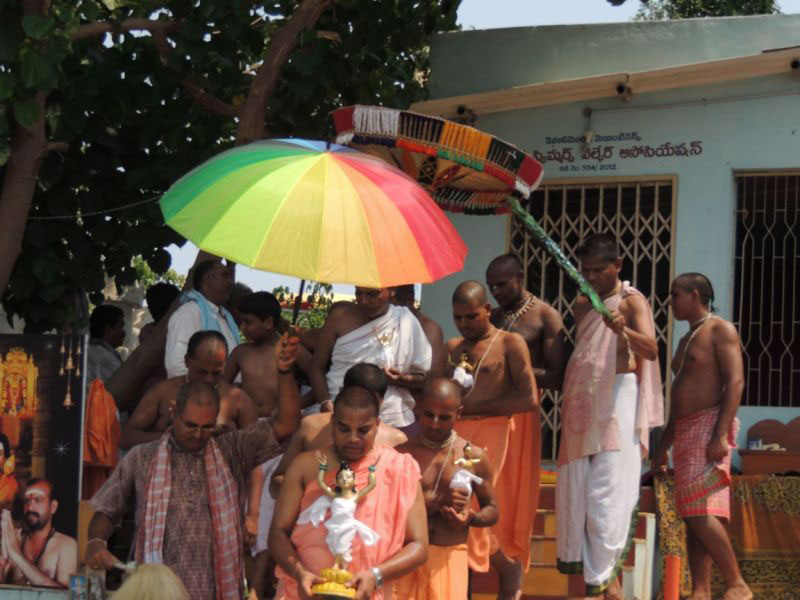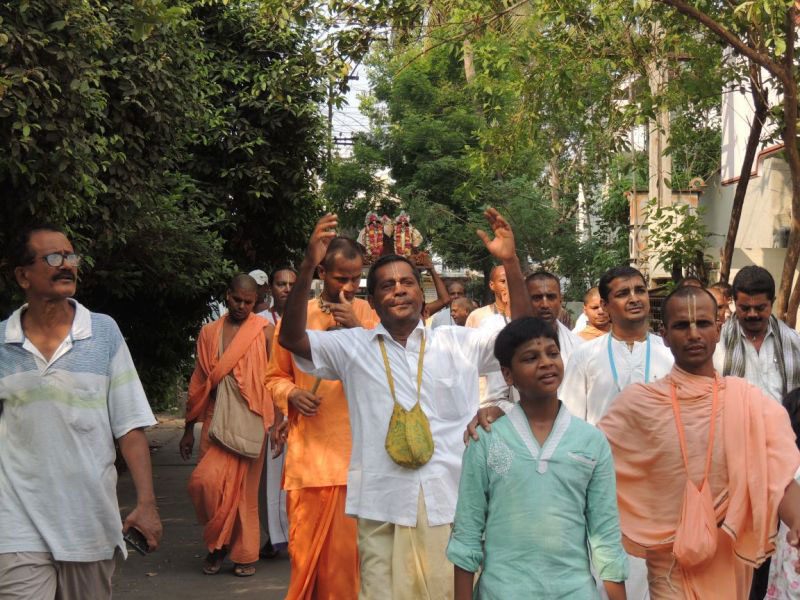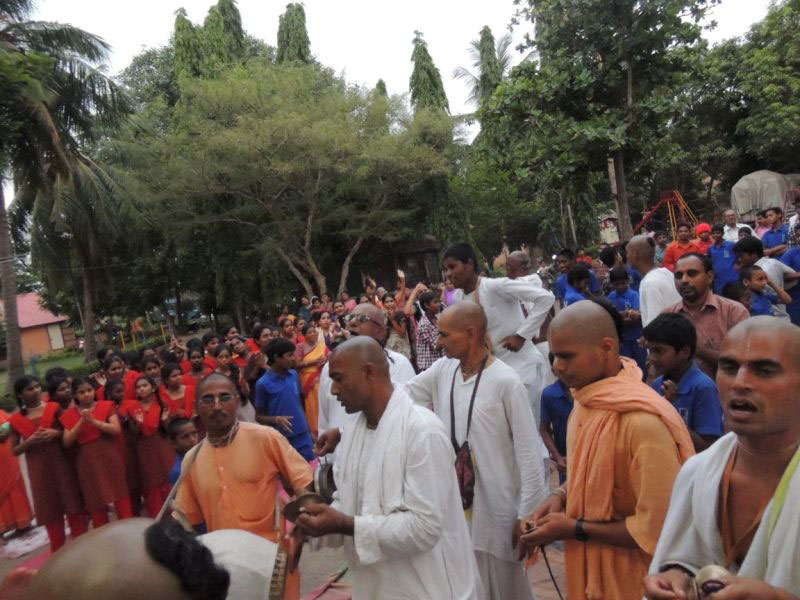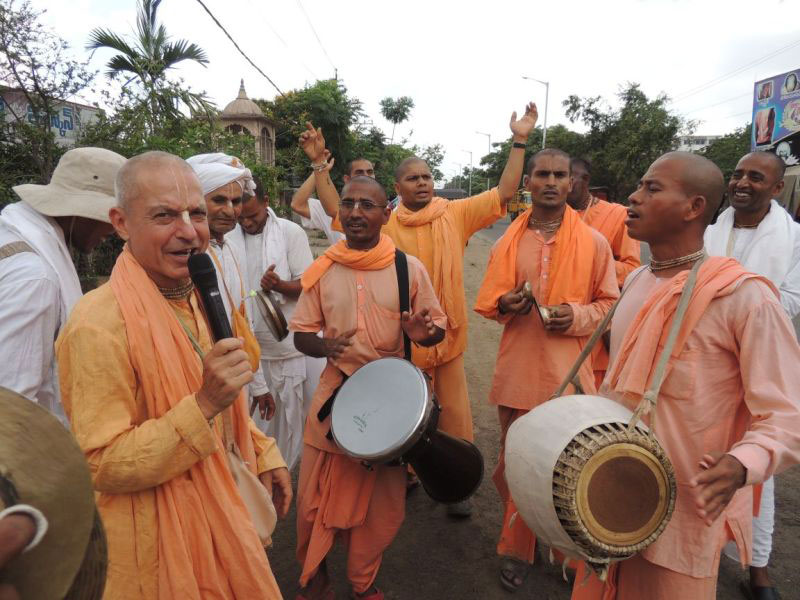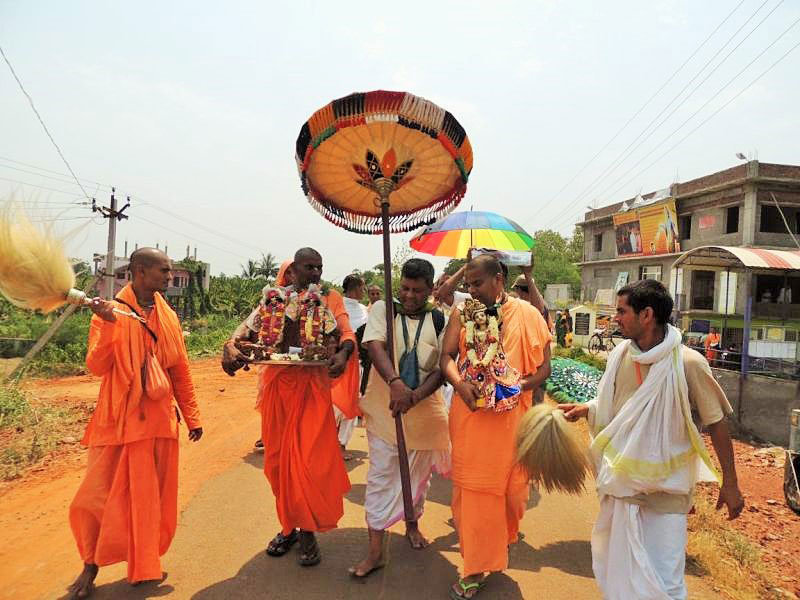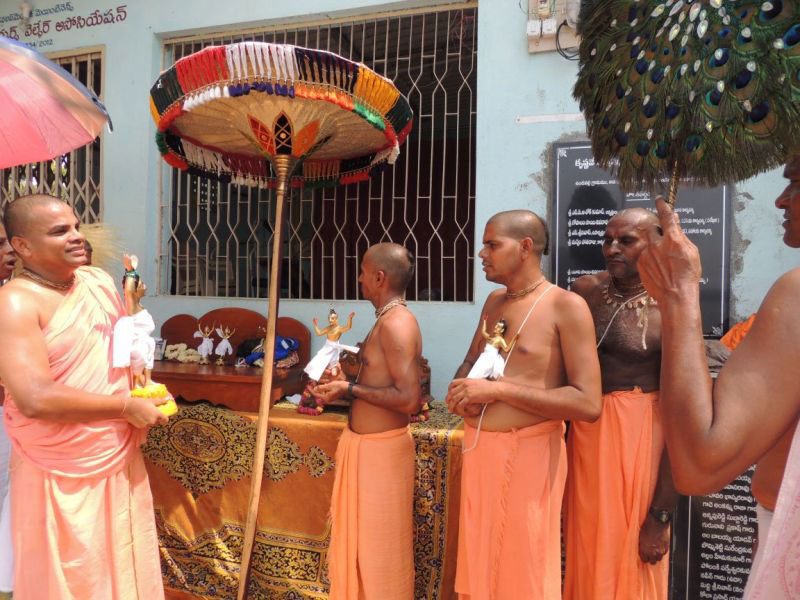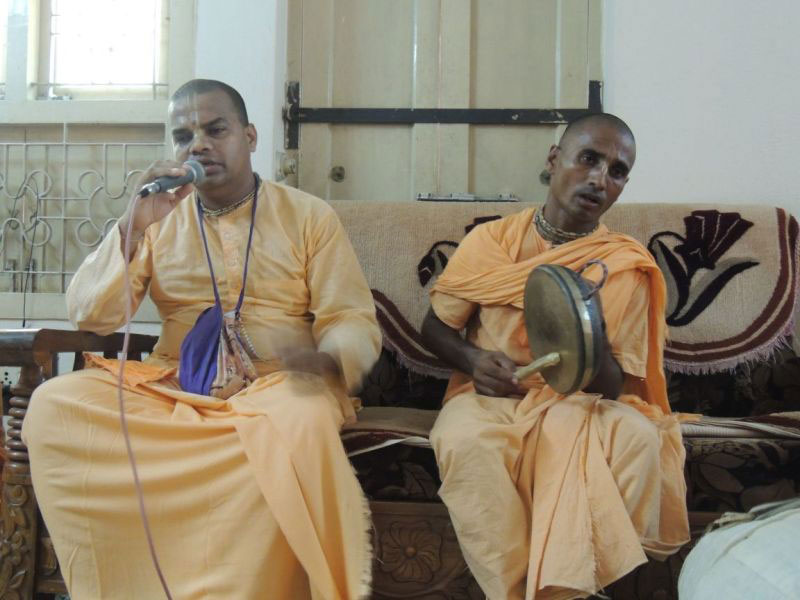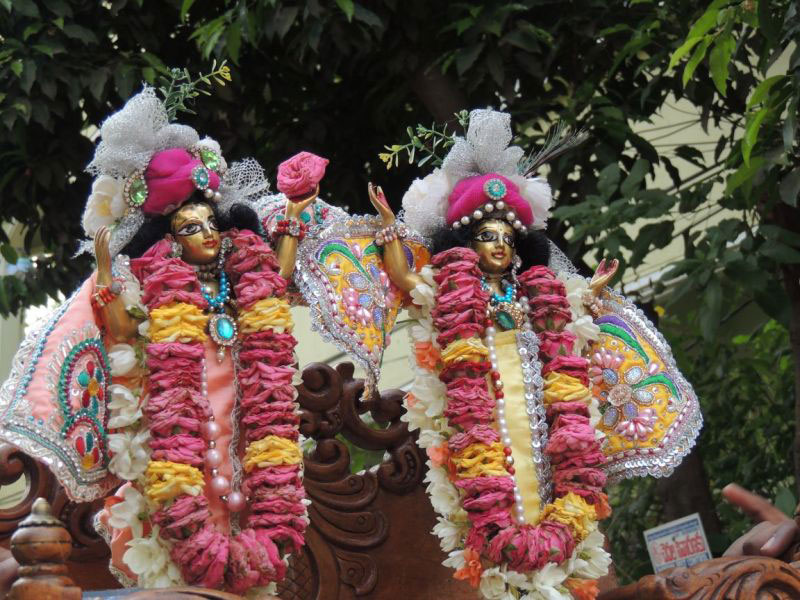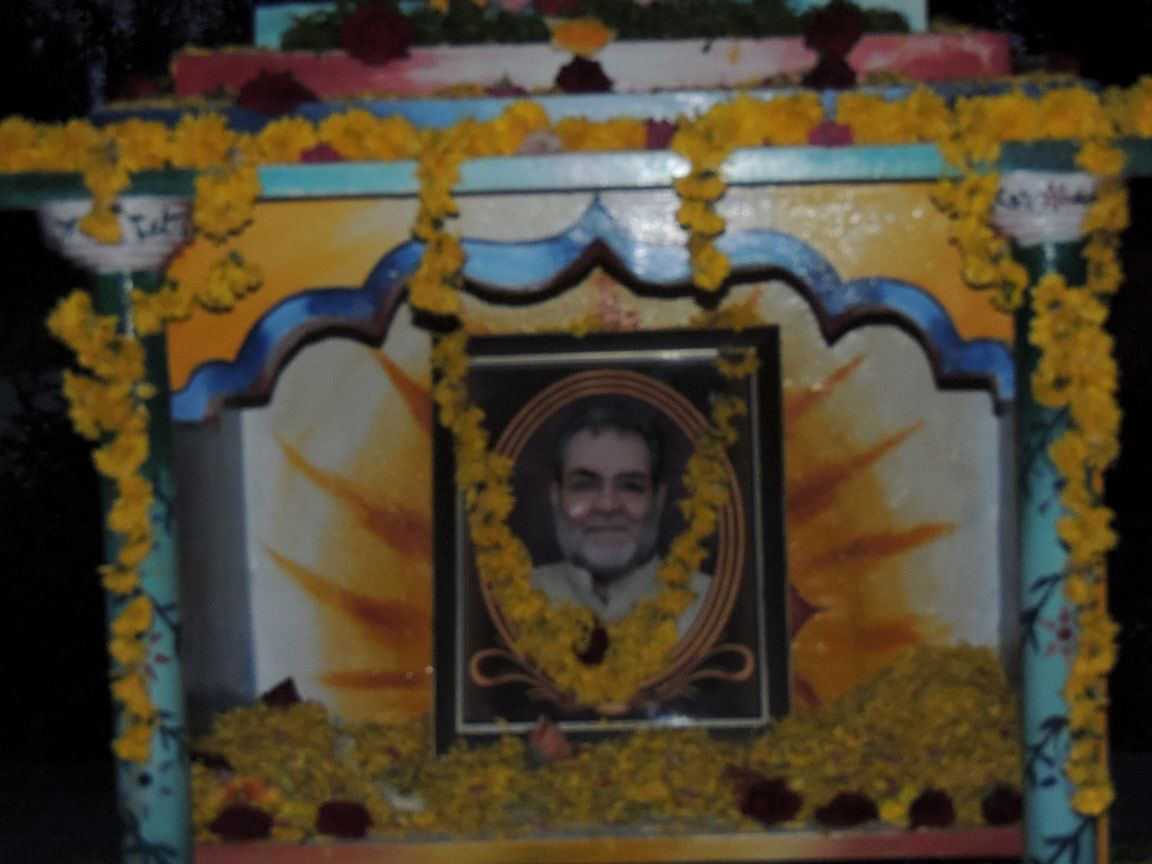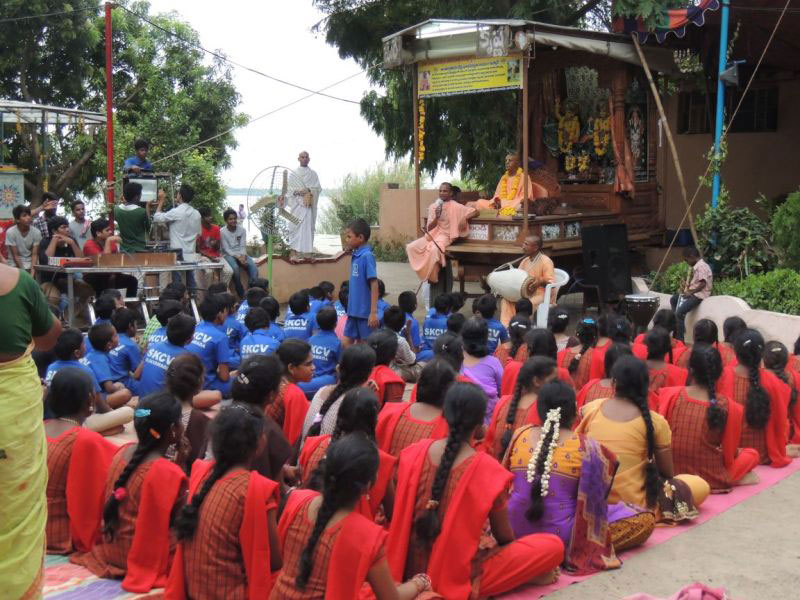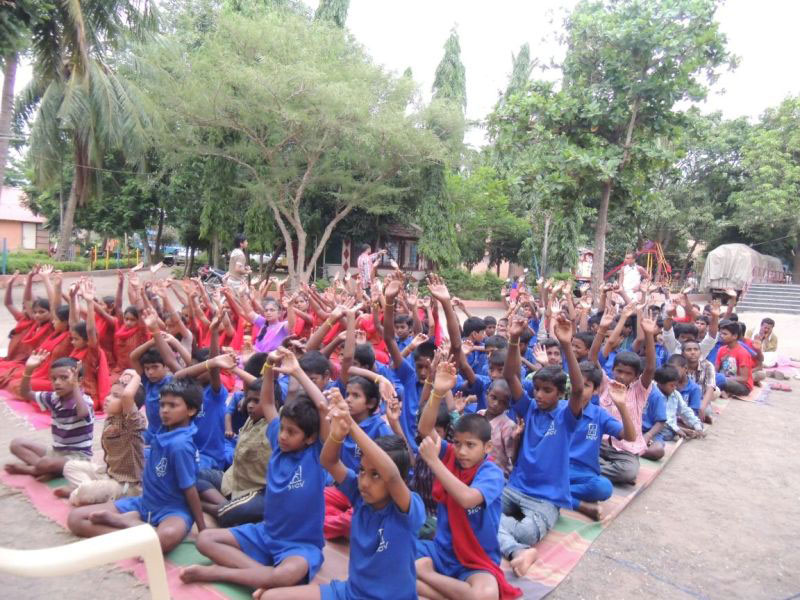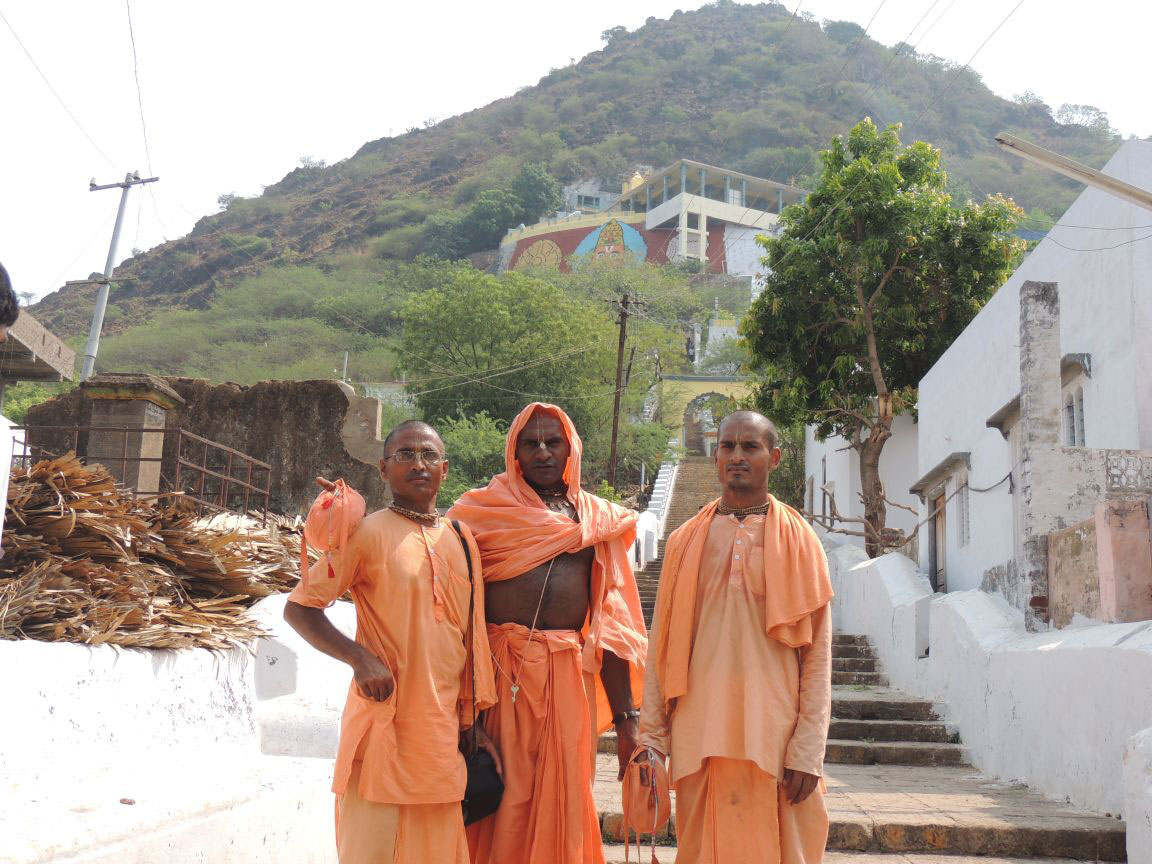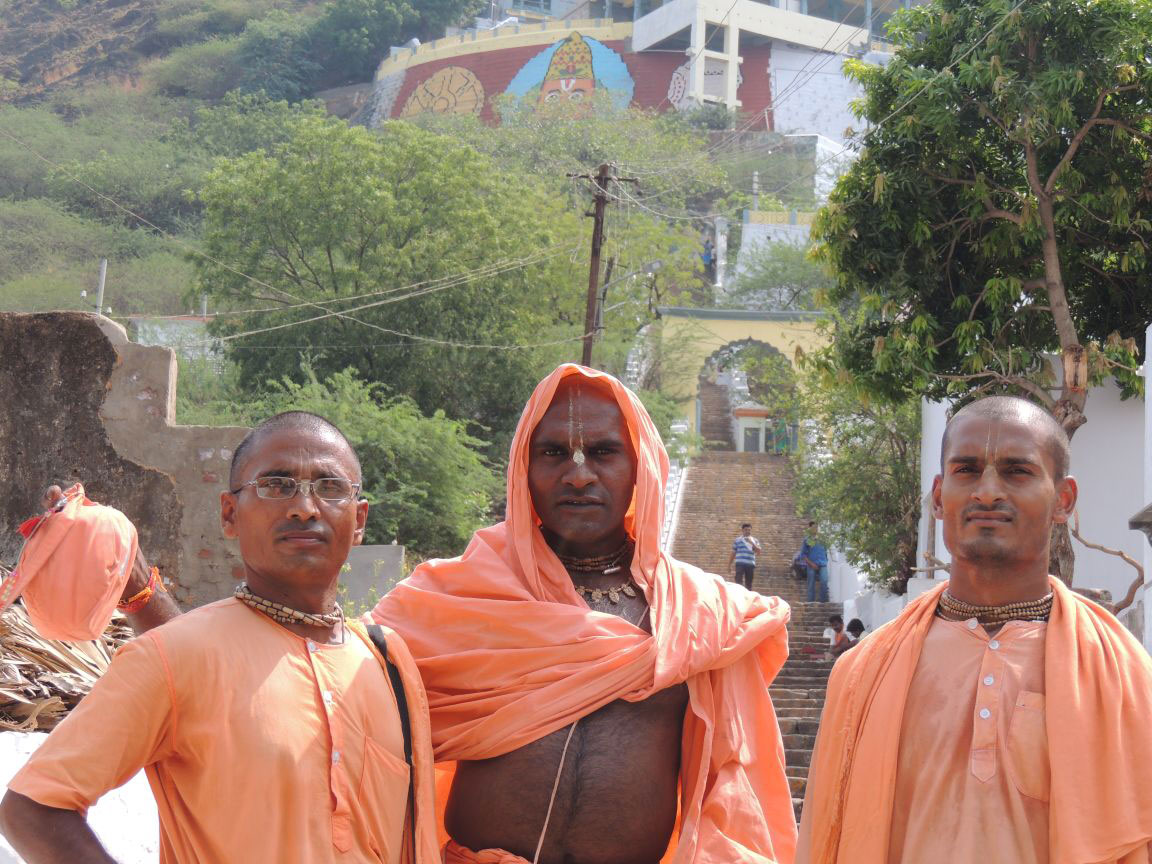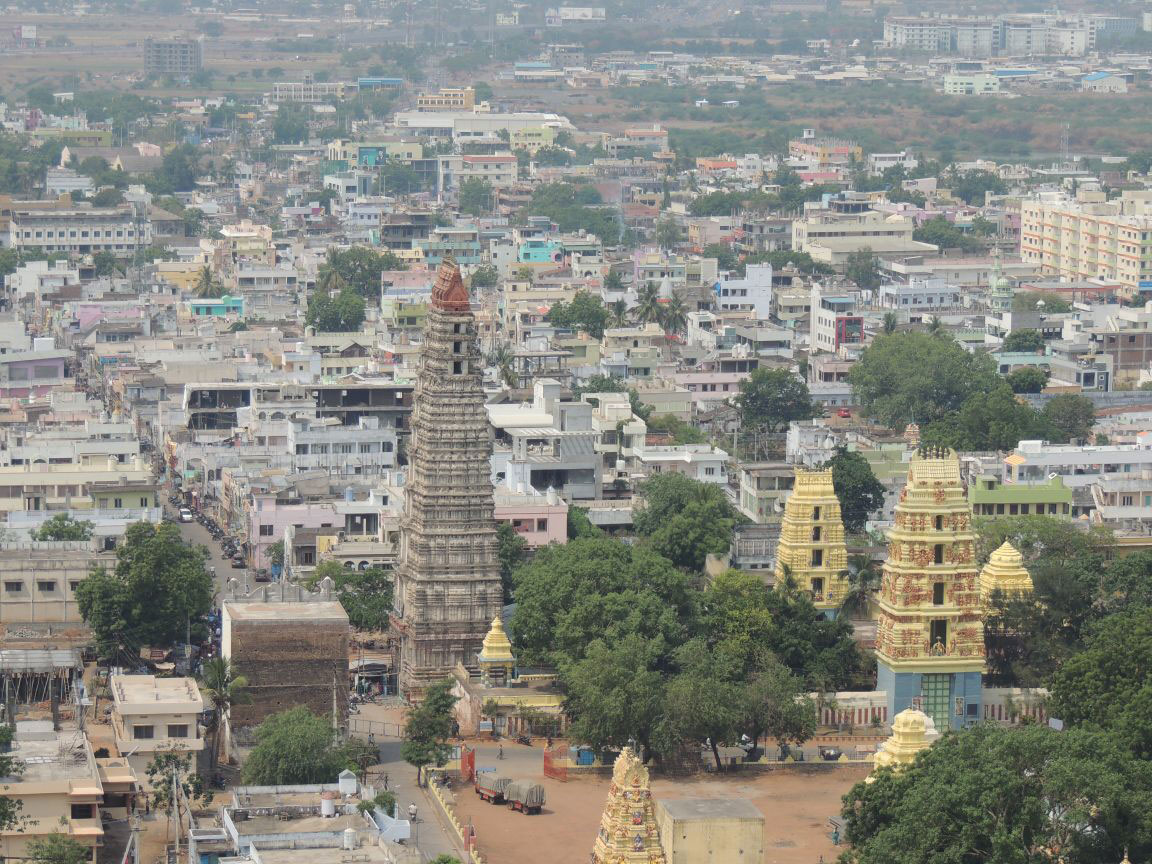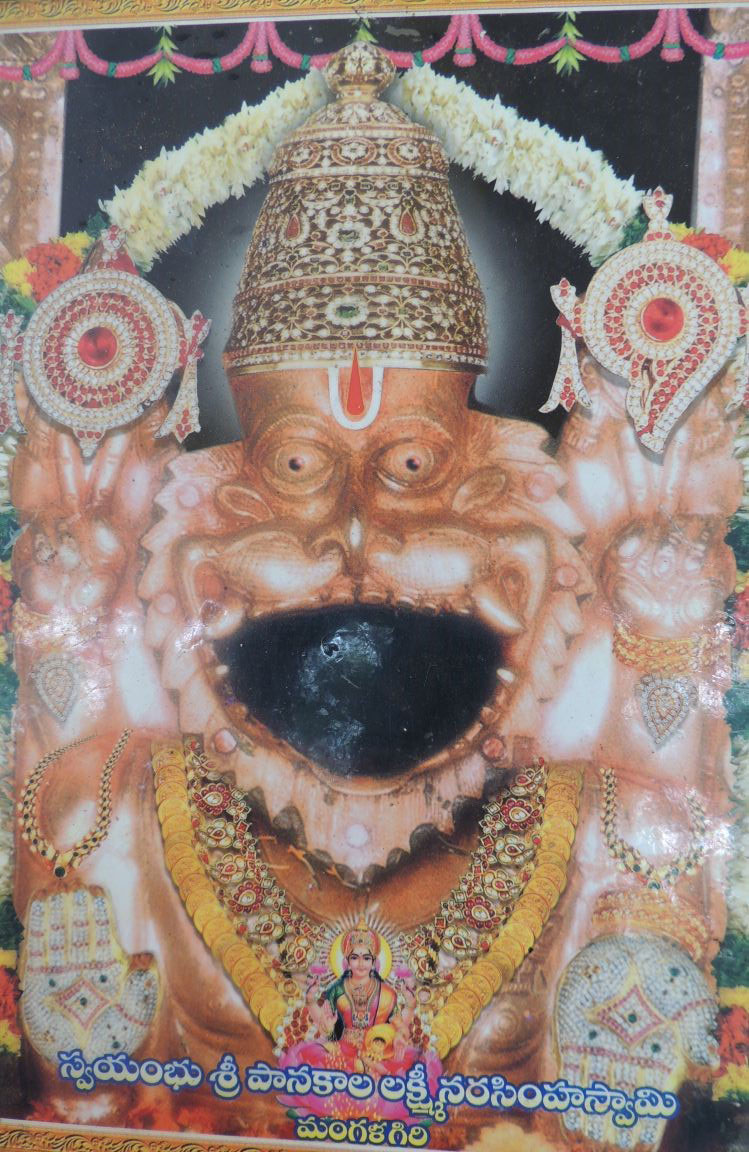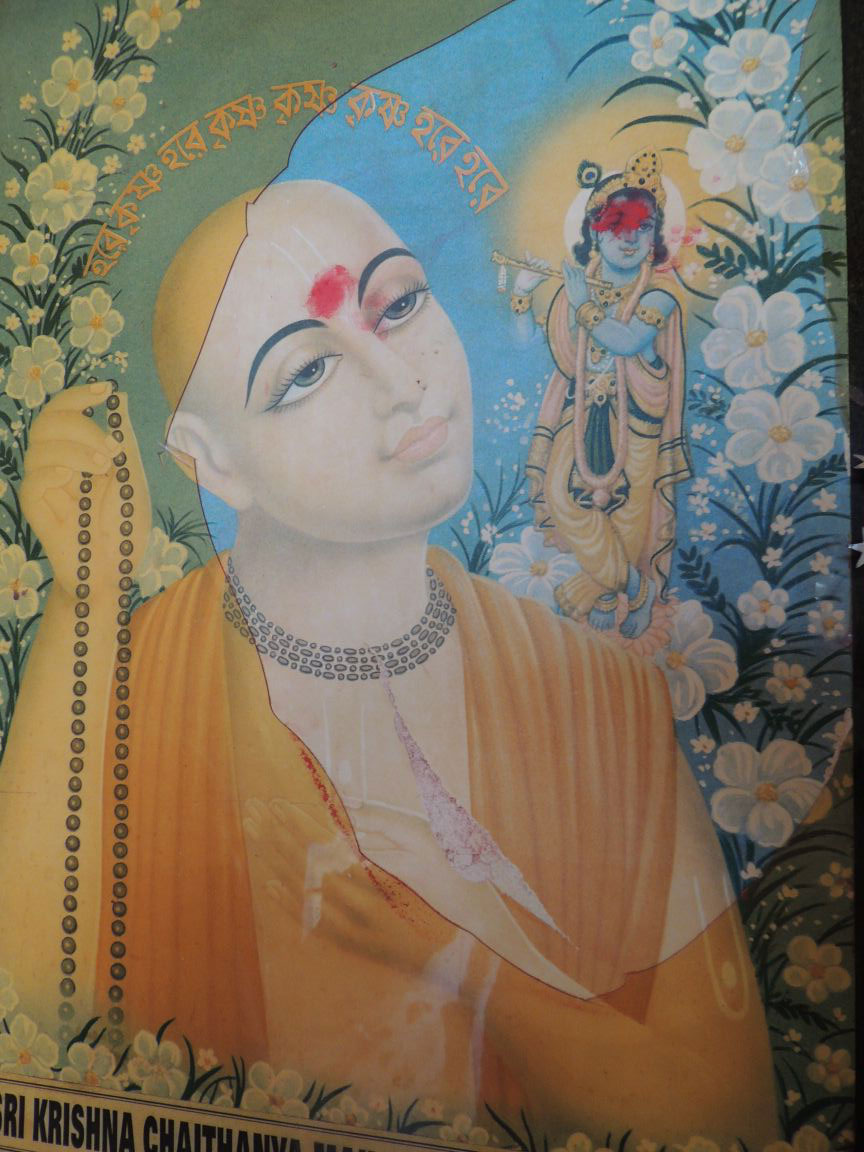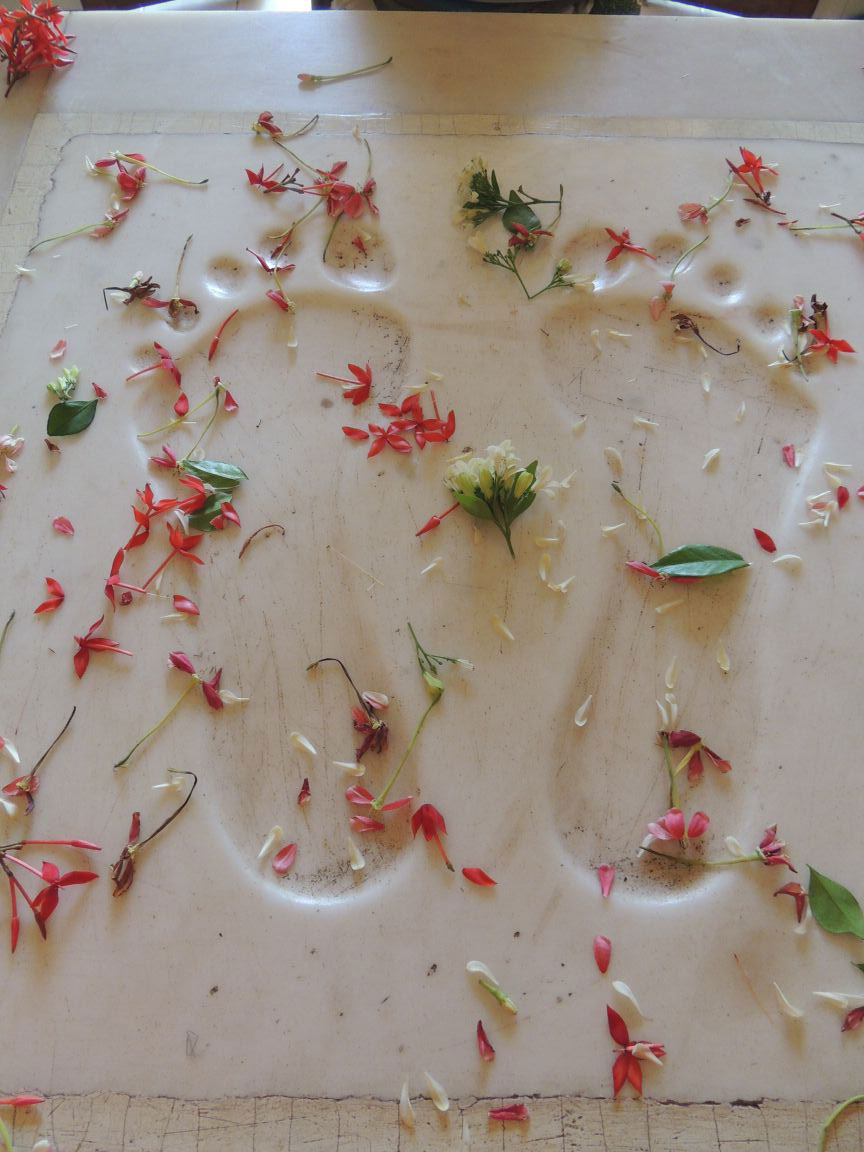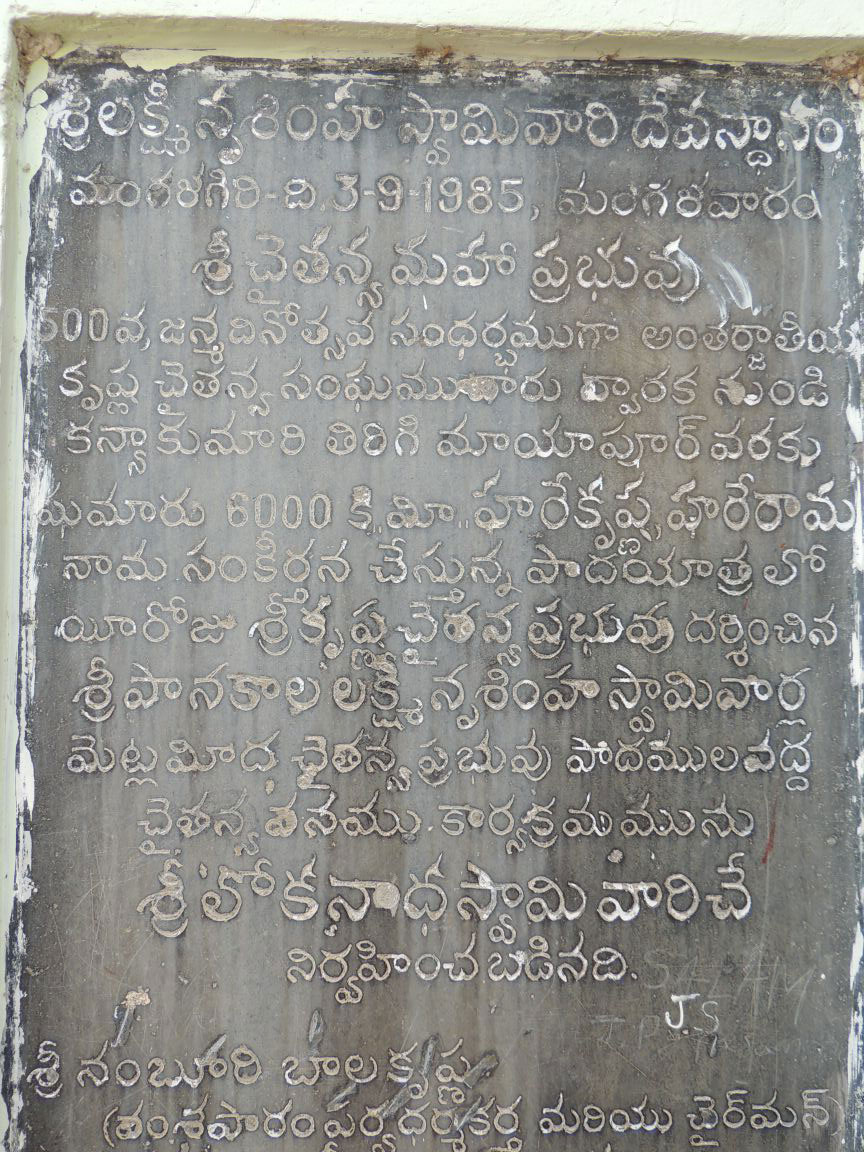Here are the main places where Padayatra India visited from January to June 5th. Some of these places have already been mentioned in previous articles. The reason they again appear here is because we later received many photos of these locations, some without captions, alas. Life on the road is very intense, as you can all imagine.
Ichapuram (January 9):on the border of Orissa and Andhra Pradesh. Raghupati Dasa, disciple of Bhaktisvarupa Damodara Maharaja, did all the arrangements, and Murli Dasa, a retired military man, provided us with books in the local telegu language, which he had brought form Hyderabad.
Sompeta (January 11): a census town in the Srikakulam district
Narasannapeta: We were welcomed by Sevanidhi Dasa, disciple of Jayapataka Maharaja. With his help we organized a shobha yatra in the city and did nagar sankirtan.
Srikakulam (January 26): Two kilometres from this town is the temple of the Sun God in Arasvalli, constructed by a king of the Kalinga dynasty. It is the only Sun God temple in South India. Padayatra arrived for the festival of Ratha Saptami or Rathasapthami marking the birth of Surya, also celebrated as Surya Jayanti (the Sun-god’s birthday). Ratha Saptami also marks the gradual increase in temperature. We had darsana of the Sun God and had a grand harinama on the streets of Srikakulam, during which we distributed 500 Bhagavad-gitas.
Sri Kurmam: It is located13 kilometers East of Srikakulam near the sea. This is the holy place of Kurma-ksetra (also known as Kurma sthana), with a temple dedicated to Sri Kurmanatha, the second avatar of Lord Vishnu, ( the tortoise incarnation). We all went with Nitai-Gaurasundara for the darsana of Lord Kurmadev and had a big kirtana there. To make the pilgrims’ meditation easier, locals had made a pond with different types of tortoises.We also saw the footprints of Caitanya Mahaprabhu established by Srila Bhaktisiddhanta Sarasvati Thakur.
Ranasthalam (Feb 1 to 3): This village is located 28 kms West of Srikakulam. Trivari Govinda Dasa, a brahmacari from ISKCON Tirupati, came there to receive the Padayatra and Their Lordships. He did the necessary arrangements, and with his assistance we celebrated a wonderful festival for the appearance of Lord Nityananada. We had kirtana, abhisheka of Gaur Nitai and we all sang vaisnava songs. Many devotees had arrived for the occasion. A grand shobha-yatra was organized and Gaur Nitai were carried through the streets, mercifully giving Their darsana to everyone. After the program prasadam distribution was done.
Vishakapatnam : Padayatra stayed at the ISKCON Vishakapatnam temple on Beach Road, a few kilometers away from the city. Samba Dasa, a disciple of Jayapataka Maharaja, welcomed us and Sri Sri Gaur Nitai with love and affection. The devotees were glad to see us and Their Lordships, and did all the necessary arrangements for our comfort. On February 17 we celebrated Mahashivaratri in the Shiva Temple of Vishakapatnam. With the congregational devotees we organized a grand celebration with harinama and prasadam distribution; every evening we did nagar sankirtana and book distribution in the area.
From March 11 to 12 we were hosted at the Gaudiya matha of Srila Puri Maharaja. Srila Prabhupada had also stayed there for 4 to 5 days. Lokanath Maharaja had instructed us to visit the Maharsatra Society ( a group of Maharastrians staying in Vishakapatnam) and have a program with them. Our Maharastrian brothers were very happy to see us and welcomed us warmly. We had a special katha describingthe glories of the holy names. The members of the Maharsatra Society were very pleased and gave us a donation for padayatra.
As Gaur Purnima was approaching 15 devotees went to Mayapur to attend the Navadvipa Mandala Parikrama while the rest of us stayed back in the temple and took advantage of this break from the road to renovate the cart by repairing the damages done and giving it a fresh layer of paint.
Simhachalam (March 17): Simhachalam – the hill of the lion (“Simha” means lion and “Adri” or “Achala” means hill) is located at a distance of 18 km from Vishakapatnam. The temple of Lord Nrsimhadeva located at the top of a hill is said to be the place where the Lord appeared in His ugra (ferocious) form to kill the demon Hiranyakashipu. This form of the Lord is so fierce that it is kept covered by sandalwood paste throughout the year, and can be seen without it for only 12 hours per year. In the month of May is the festival of Chandana yatra or ‘Chandanotsavam’ during which the deity is again covered with sandalwood paste. The priests of the Simhachalam temple belong to the Sri Sampradaya, the line that follows the revered devotee and philosopher Ramanujacarya. Simhachalam is one of the 108 places recognized by the Sri Sampradaya as divya-devams, spiritual places in this material world. The temple functions are performed by Vaisnava priests as they have been since Ramanujacarya visited there nine centuries ago.
The padayatris went for darsana of the Deity and we all prayed to Lord Nrsimhadeva to remove all the obstacles on our bhakti marga. The temple on the hill is accessed via a motorable road, and it attracts scores of pilgrims from both Andhra Pradesh and Orissa. On the hill we also saw the footprints of Lord Caitanya Mahaprabhu established by Srila Bhaktisiddhanta Sarasvati Thakura and had a grand kirtana at that spot.
Let’s not forget to mention Simhacalam Prasad Dasa, who did all the arrangements for our party.
Rajahmundry (April 16 to 18): We stayed at the local ISKCON temple. Many congregation devotees and children participated in the shobha-yatra and many women did book distribution with us.
Kovvur ( April 21): It is an important town in the West Godavari District due to its location on the banks of the sacred Godavari River. We visited the Sri Ramananda Gaudiya Matha established by Srila Bhaktisiddhanta Sarasvati Thakura on July 1932. He had also installed the footprints of Sri Caitanya Mahaprabhu to mark the Lord’s meeting with Sri Ramananda Raya on the banks of Godavari river. Their Lordships Sri Sri Radha-Nayanabhirama and Sri Gauranga Mahaprabhu are the presiding Deities of that small temple. This matha has very nice dioramas displaying the pastimes of Lord Caitanya and Lord Sri Krishna, and also a small goshala. Besides the streets of Kovvur we also did kirtana in a boat on the river Godavari.
Ananthapalli (May 3): Celebration of Nrisimha Caturdasi.
See previous article “Padayatra India now in Andhra Pradesh”, posted May 7
Jangaredypalli (May 13):
See previous article “Who are these people walking in the hot sun and distributing so many books?”, posted May 13
Dwaraka Tirumala, or Dwarakatirumala: ( May 15) This village is famous for the temple of Lord Venkatesvara. Dwaraka Tirumala, also known as ‘Chinna Tirupathi’. is located about 40 kilometres from the city of Eluru. Here is the story behind the name of Dwaraka Tirumala: there was a great devotee of Lord Balaji who used to go to Tirupati regularly for darsana. Once he could not make it to Tirupari so Lord Balaji appeared to him in his village, which then became known as Dwaraka Tirumala.
Bhimadole (May 17): This village is located in the West Godavari district.
Hanuman junction (May 23): This town got its name because of the junction of four road near the Hanuman temple. The feet of the deity separate the Krishna and West Godavari districts. Locals believe Hanuman to be the protector of the town and people from different religions worship him and celebrate Hanuman Jayanti day together.
Vijayawada (May 30 to June 2): Vijayawada is situated on the sacred Krishna River. It is named after Arjuna, who was also known as Vijaya. A disciple of Srila Prabhupada named Manihara Dasa had started a school for orphans in this city, trying to give Krishna consciousness to the students by doing regular programs for them. The padayatris all went to that school to do harinama and perform bhajans. After a small lecture we distributed prasadam to all the children.With about 300 members of the congregation we celebrated the Panihatti dahi chida festival on the banks of the Krishna River, then gathered at the local ISKCON temple.
Mangal Giri (June 4 and 5):
The temple of Pana-Nrsimha in Mangal Giri (Guntur district) still draws many devotees, who come to get the Lord’s darsana in His Andhra Pradesh’s abode. It is one of the most famous tirthas visited by Lord Caitanya Mahaprabhu during His South India travels. This tirtha is briefly mentioned in the Caitanya-caritamrta ( Madhya Lila 9.66) : “Everywhere Sri Caitanya Mahaprabhu went, His influence astonished everyone. He next arrived at the temple of Pana-Nrsimha. The Lord is extremely merciful » Mangal giri means « the auspicious hill ». We all took darsana of the Deity of Pana-Nrsimhadev on top of the hill. It is said that Lord Nrsimha rested here after killing Hiranyakasipu, and Lakshmi Devi then gave him a drink to quench his thirst.
In making offerings to Lord Pana-Nrsimha, the temple priest takes a pot of sweet jaggery water and, with a conchshell, pours half of the drink into the Lord’s mouth and the rest is returned as maha-prasadam to the devotee making the offering. This jaggery water is made of gour, water, camphor, black pepper, and cardamom. While the water is being poured into the mouth of the Lord, a gurgling sound can be heard, like the sound of someone drinking. We also offered jaggery water and all of us heard this transcendental gurgling sound. Even though there is so much sugar water offered here, there is not a single ant on the hill.
The temple is built around a self-manifest mouth of Lord Nrsimhadev. Over the mouth is a brass mask with an ugra (ferocious) expression. The Lord’s disk and club are also self-manifested in the stone. The worshipable footprints of Caitanya Mahaprabhu are housed in a shrine known as Padapeet, which was established by Srila Bhaktisiddhanta Saraswati Thakur to commemorate Lord Caitanya’s visit to that place. On July 3rd 1985 Lokanath Swami visited this holy place with Padayatra India. After that visit the padayatris built a small temple around the footprints of Caitanya Mahaprabhu. There a slab in telugu explaining that this temple was built by Padayatra India devotees under the guidance of Lokanath Swami.
MAY 2015 BOOK SCORES (All in Telegu language):
- Maha big books: 2207
- Big: 24
- Medium: 64
- Small: 6693
- Total: 8988

